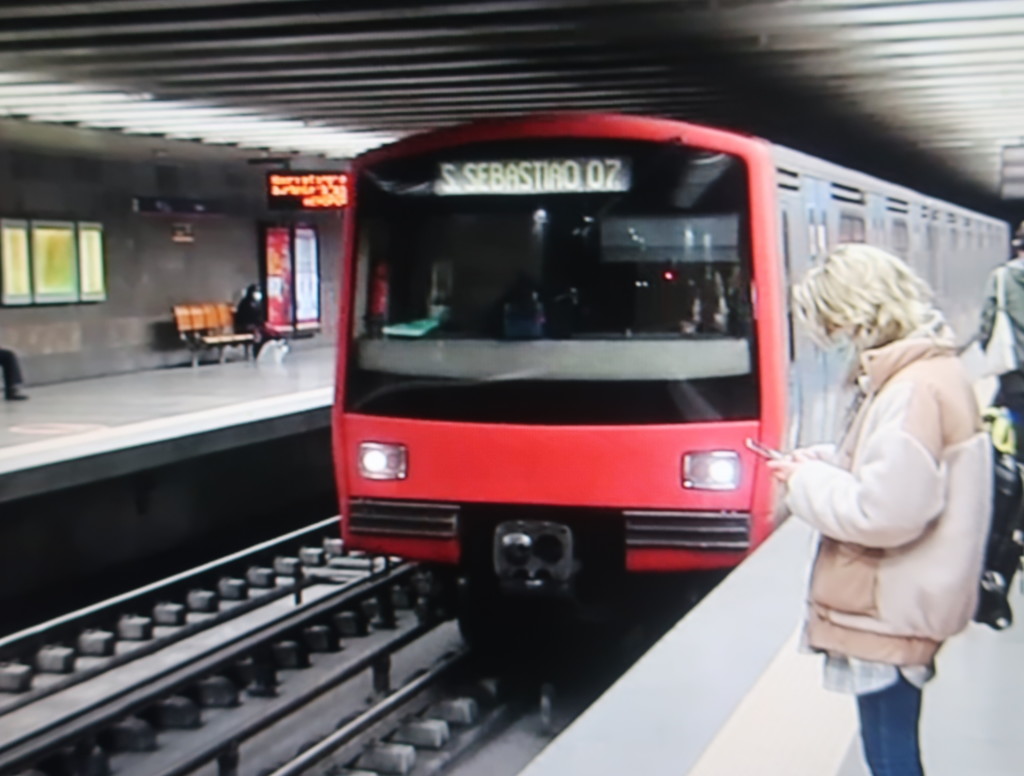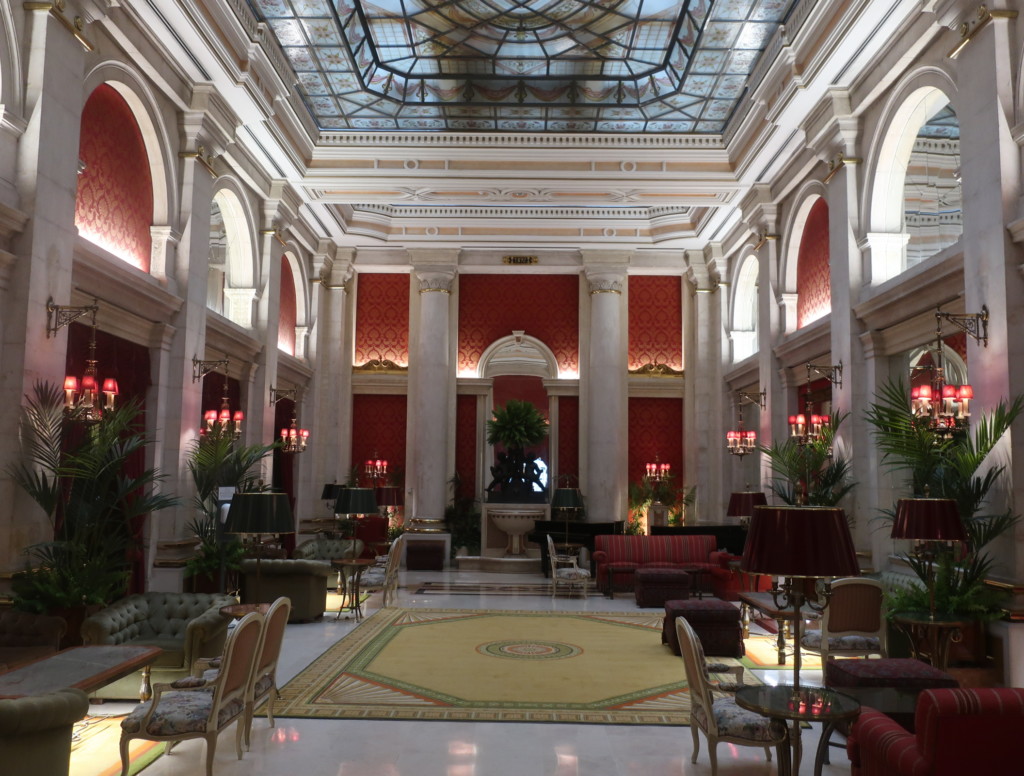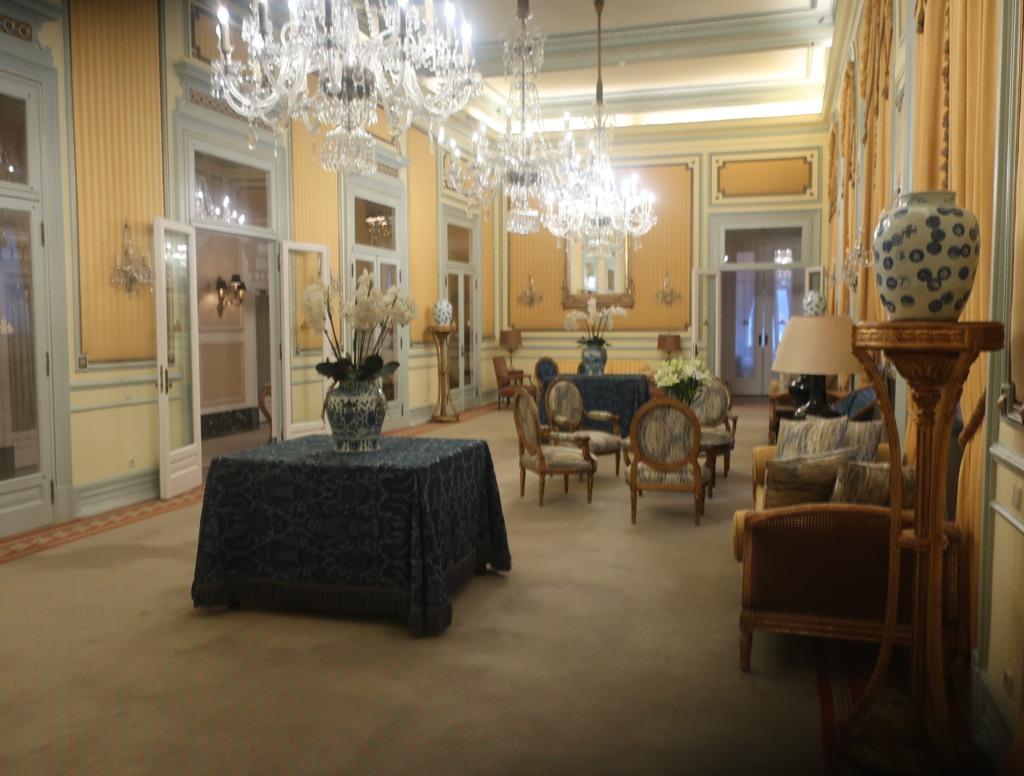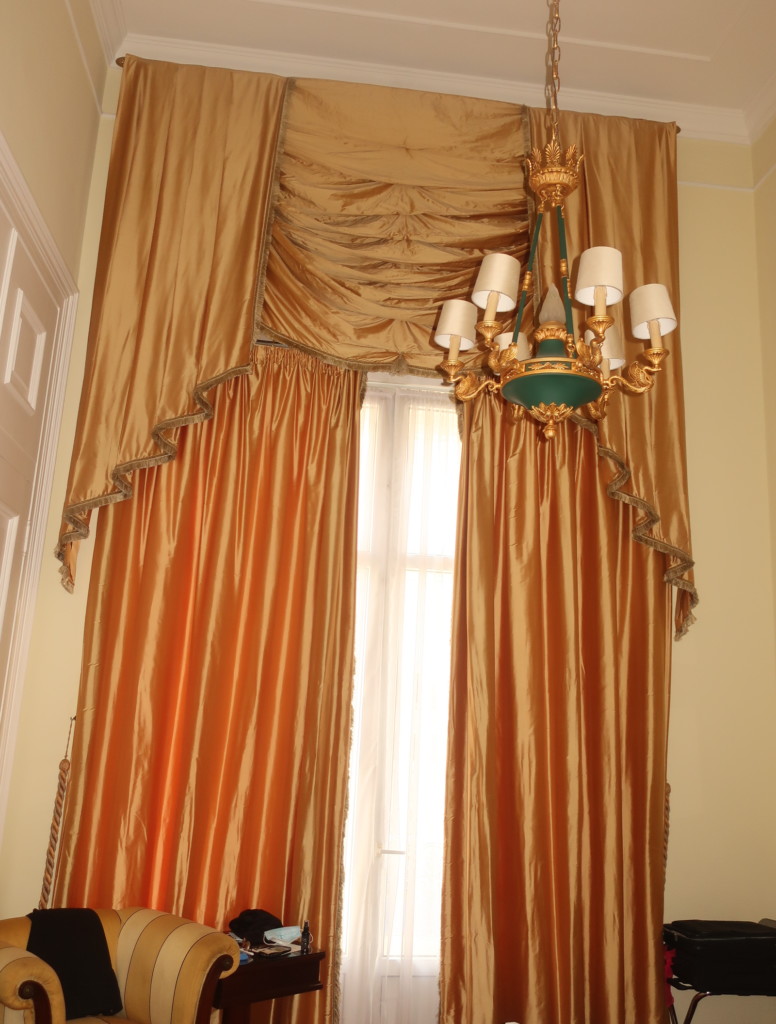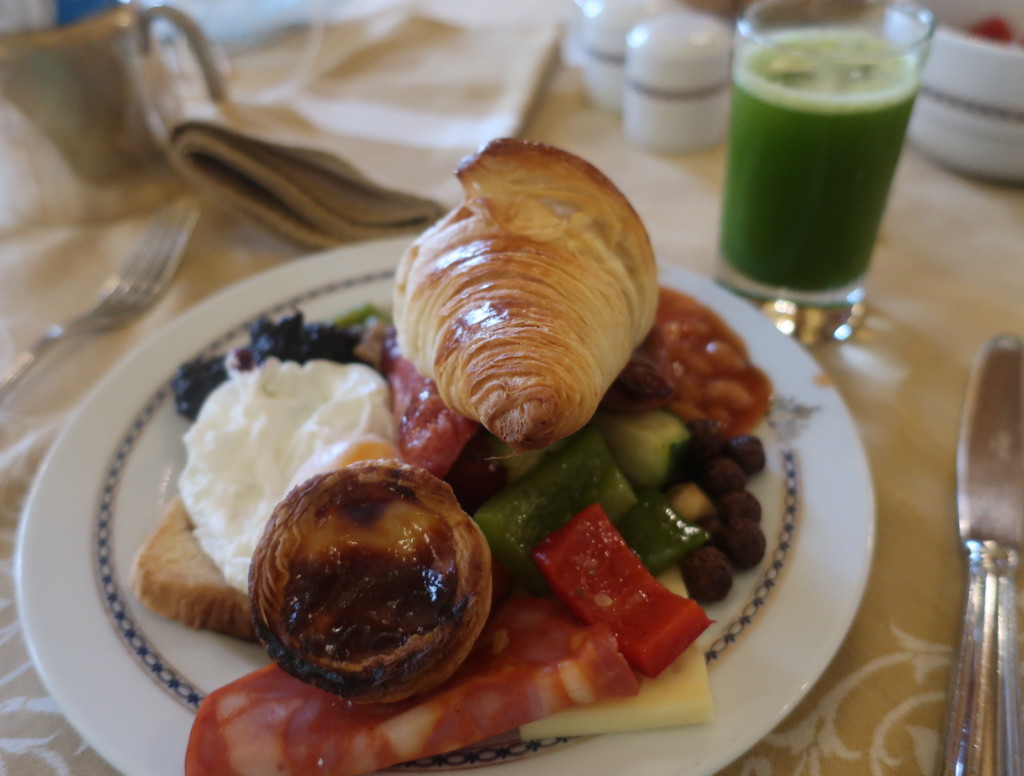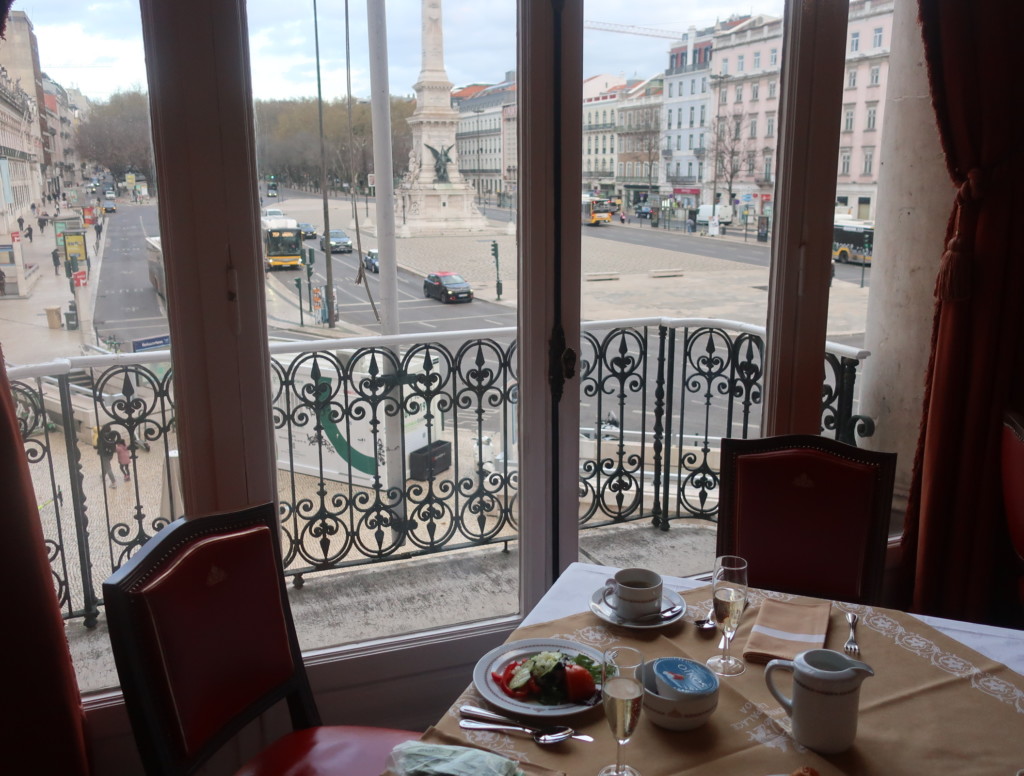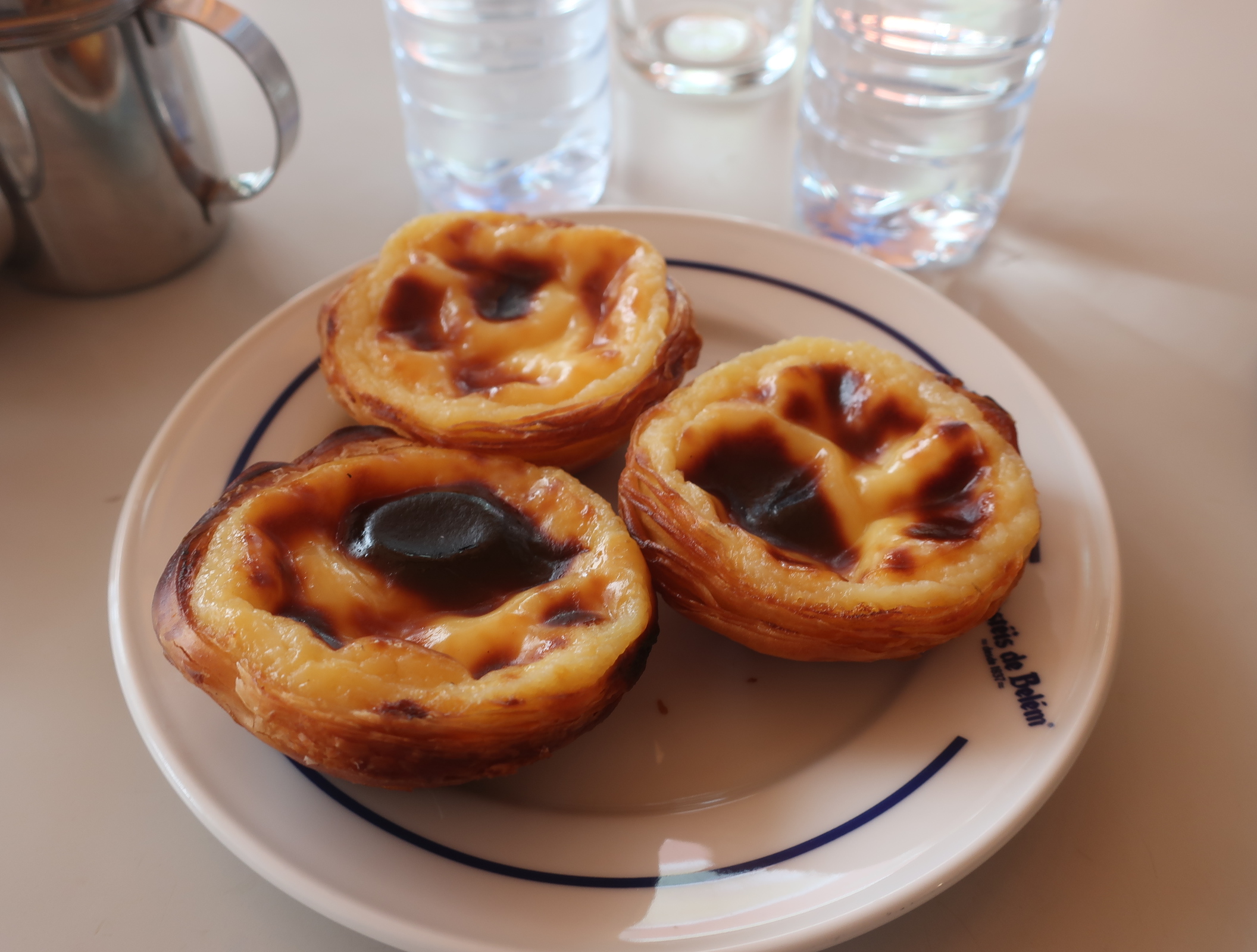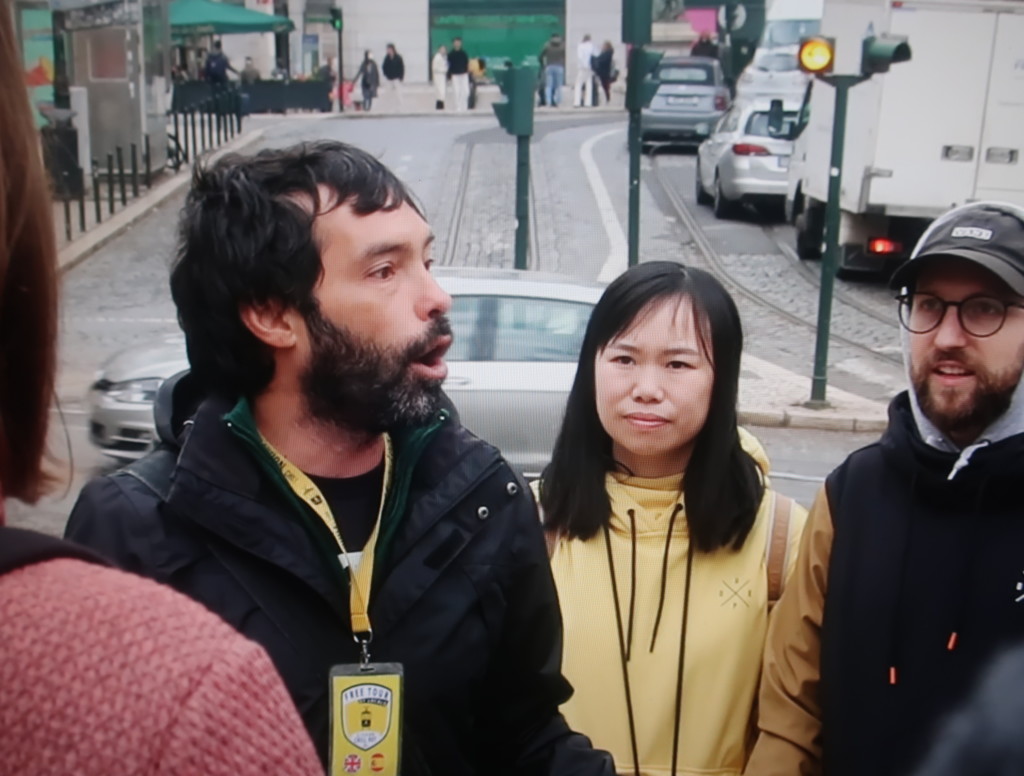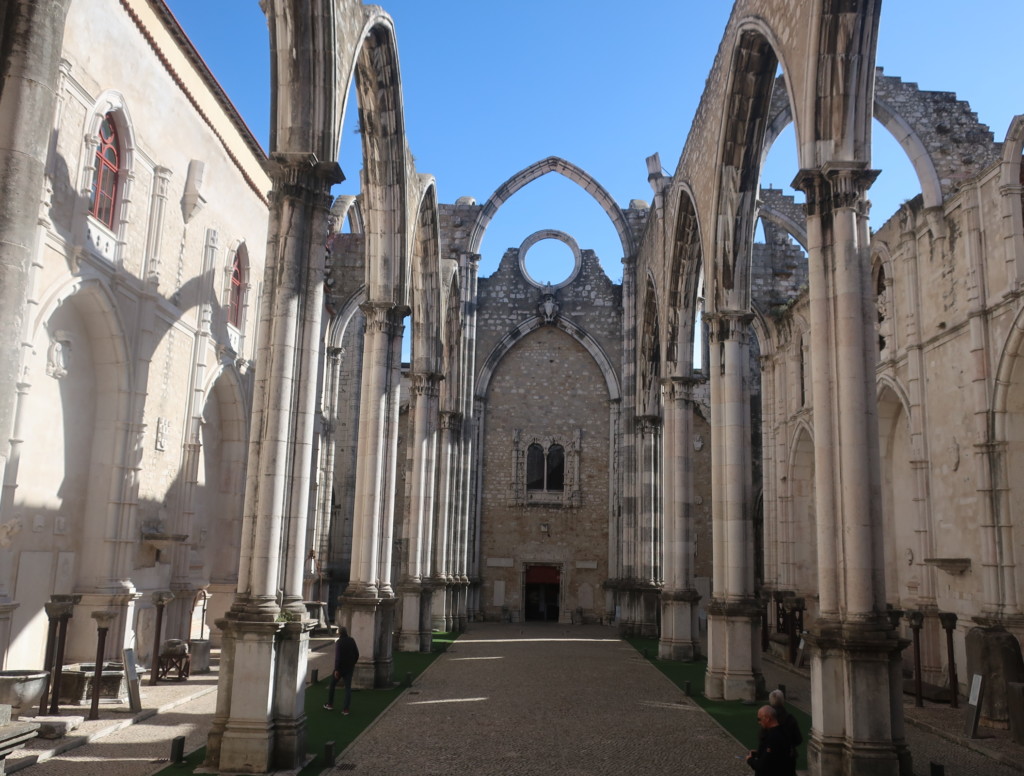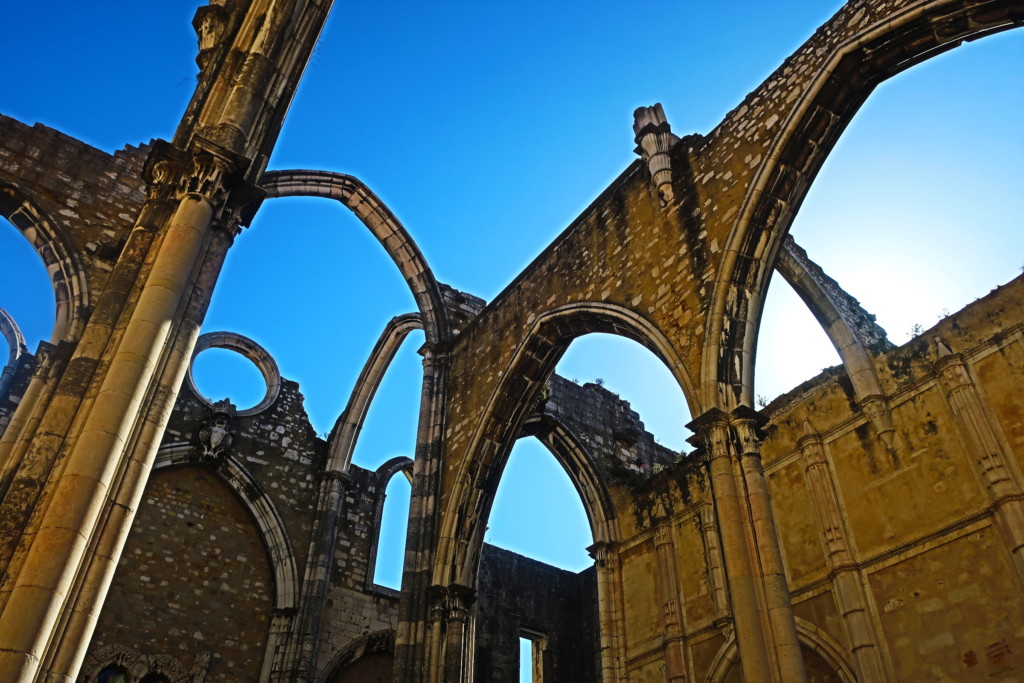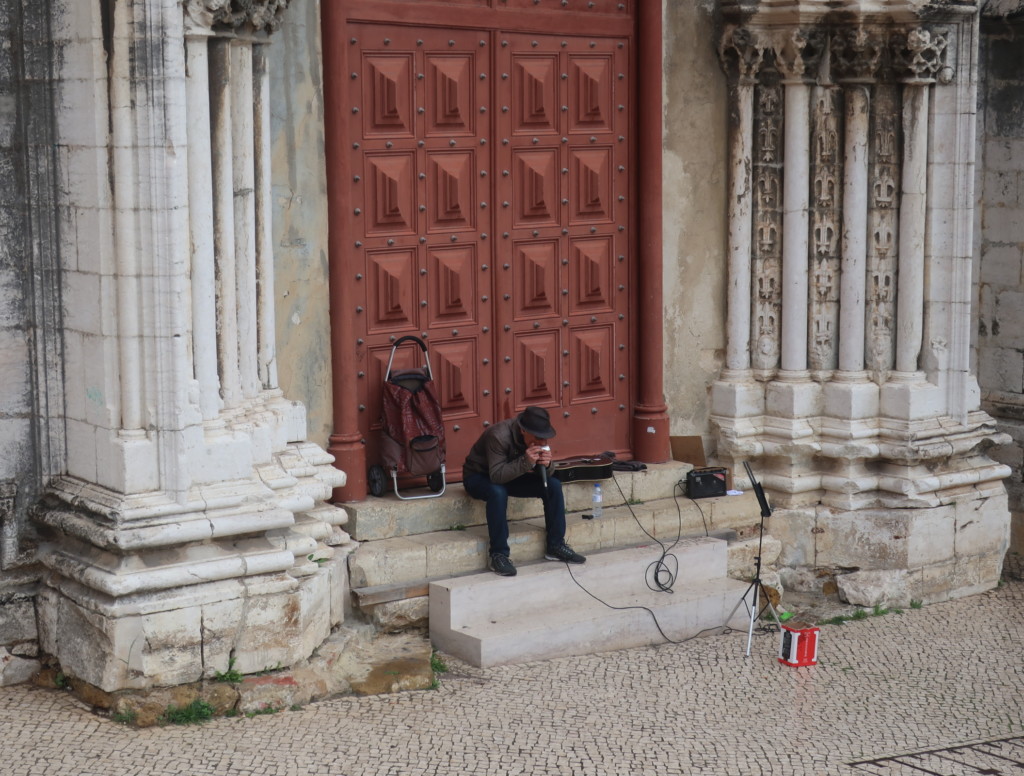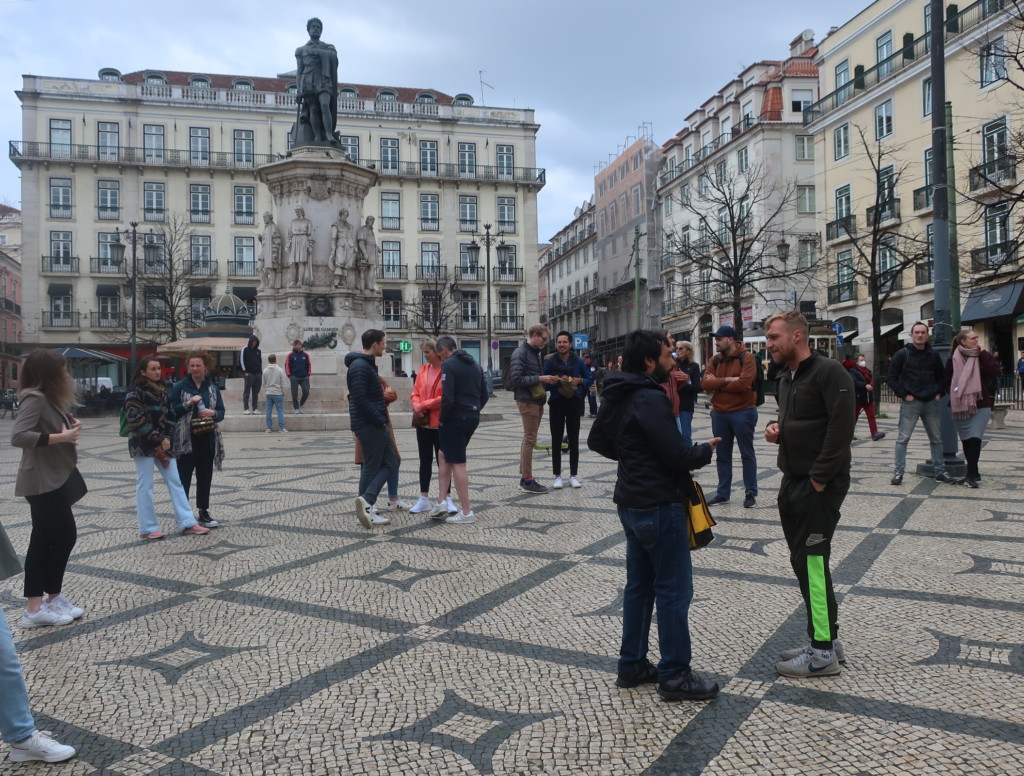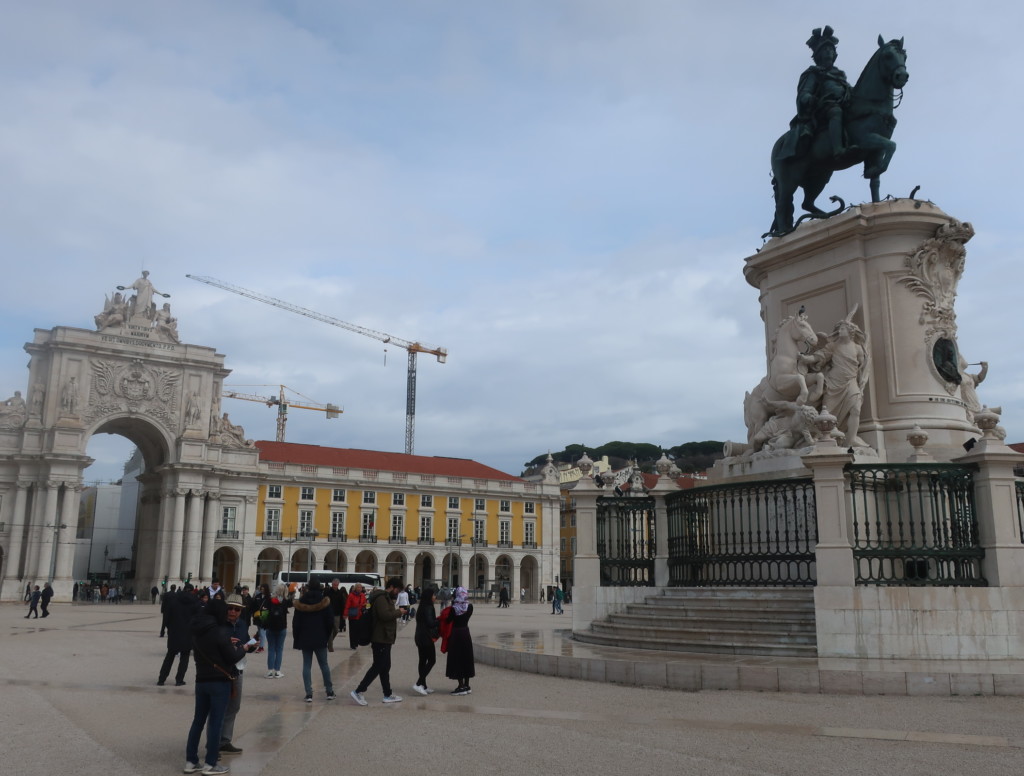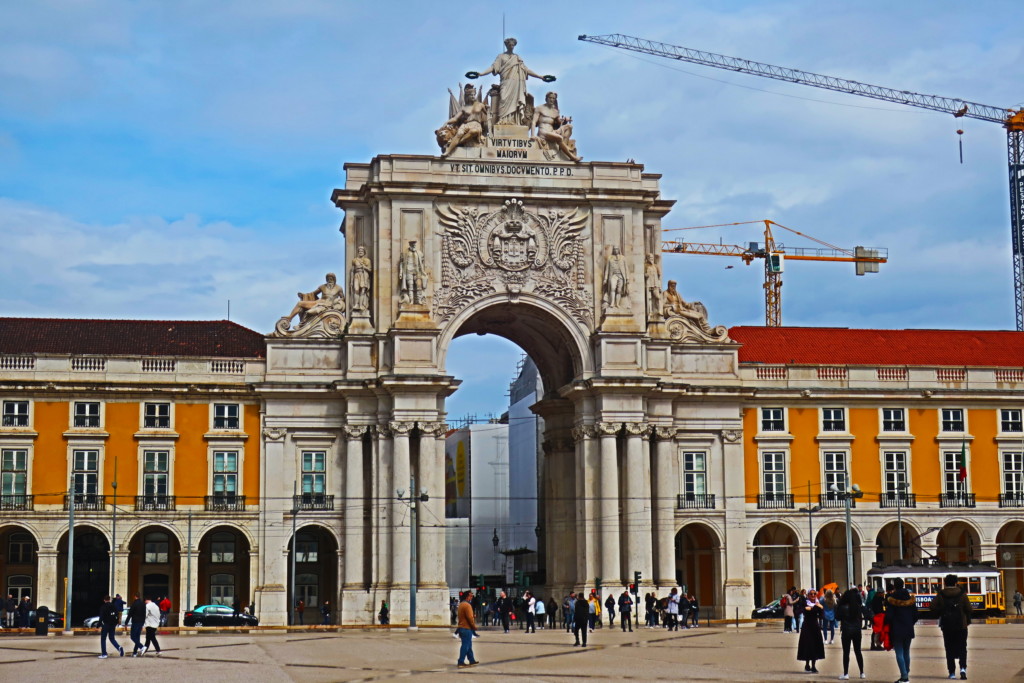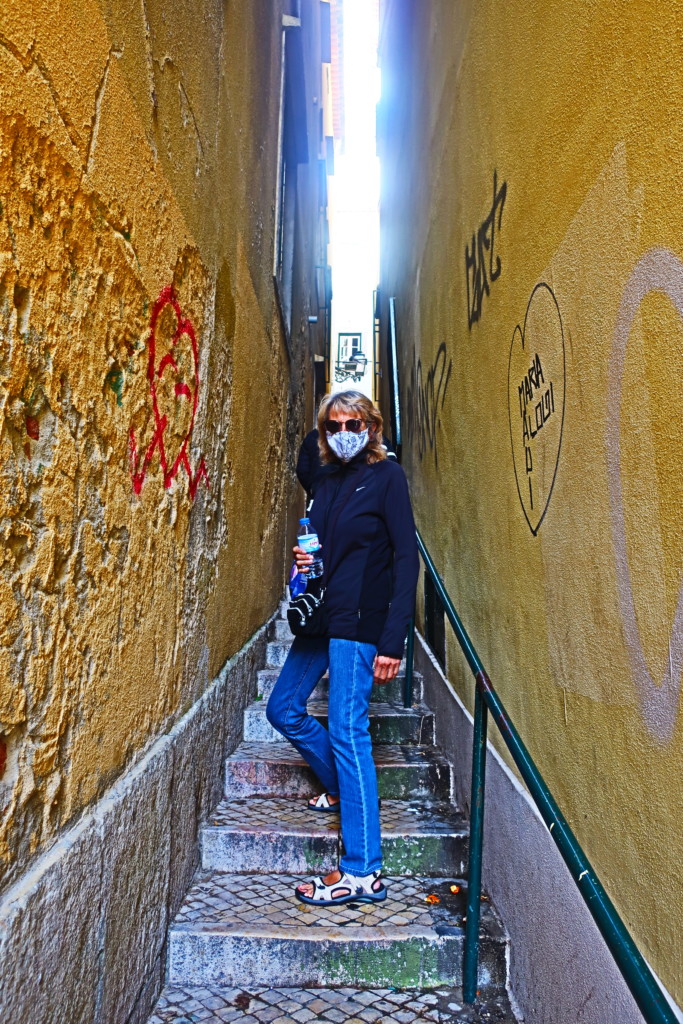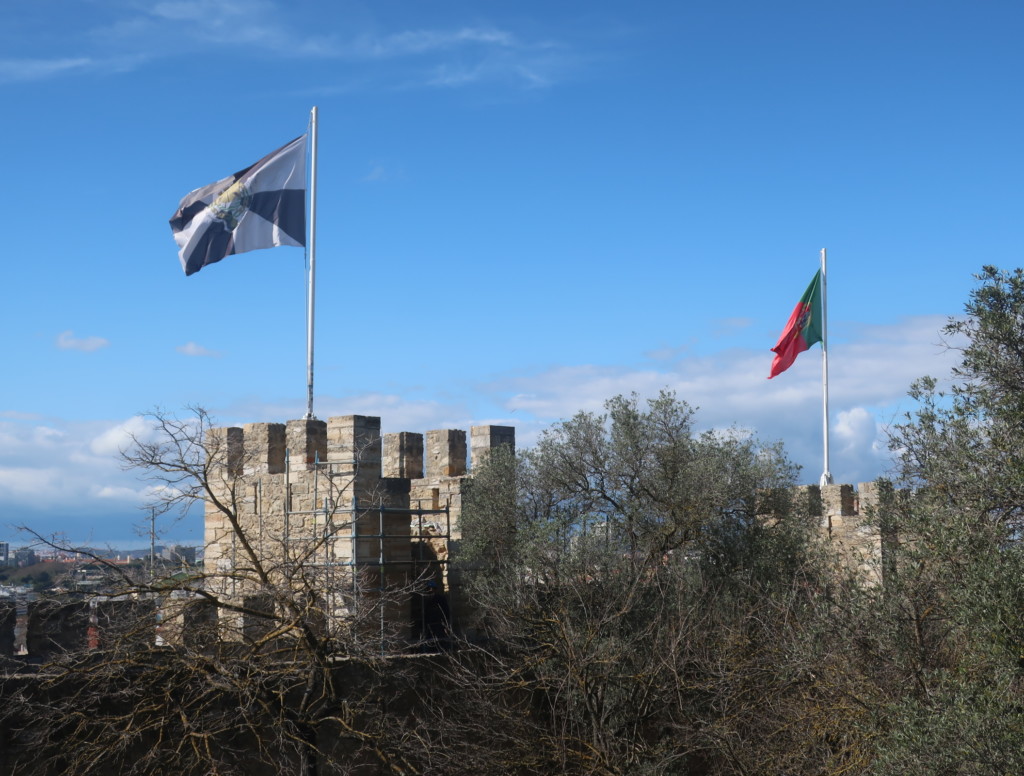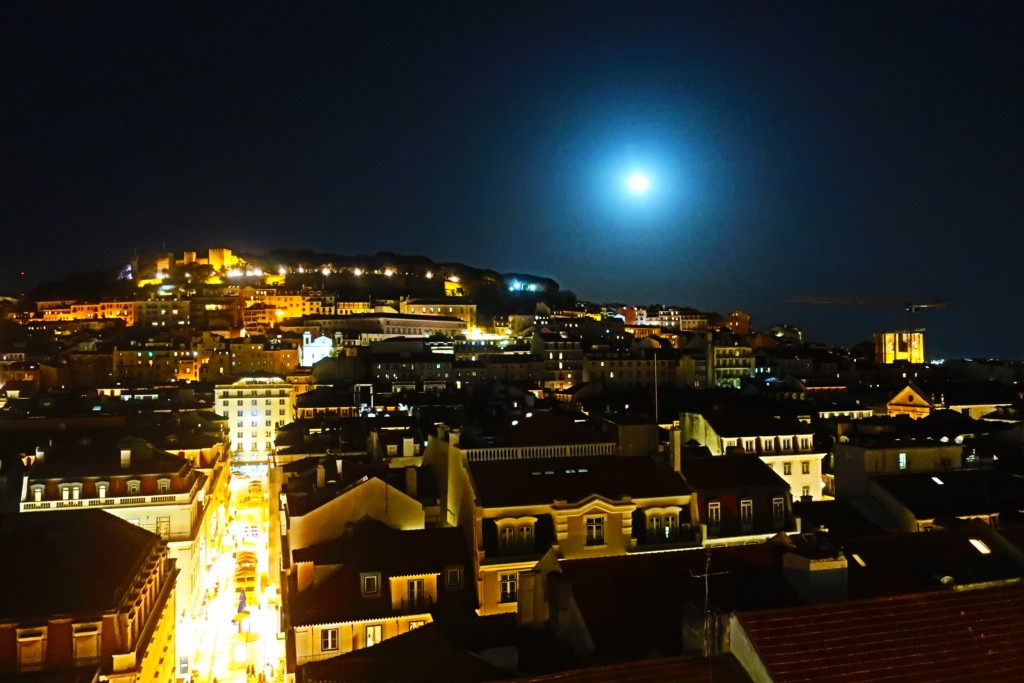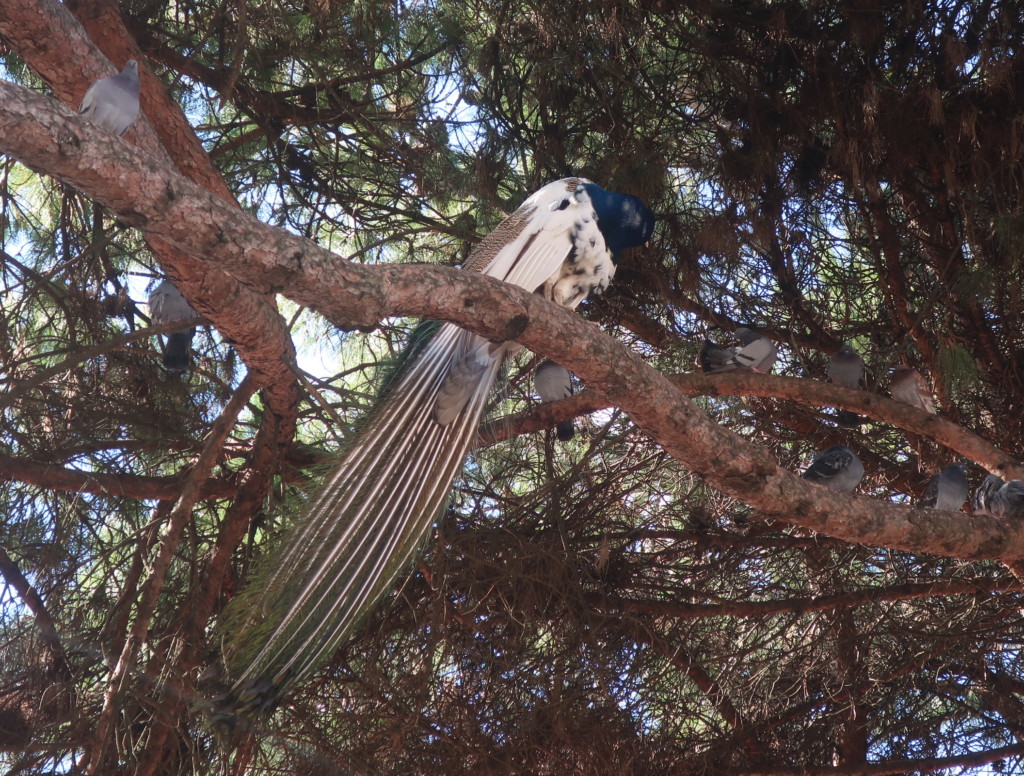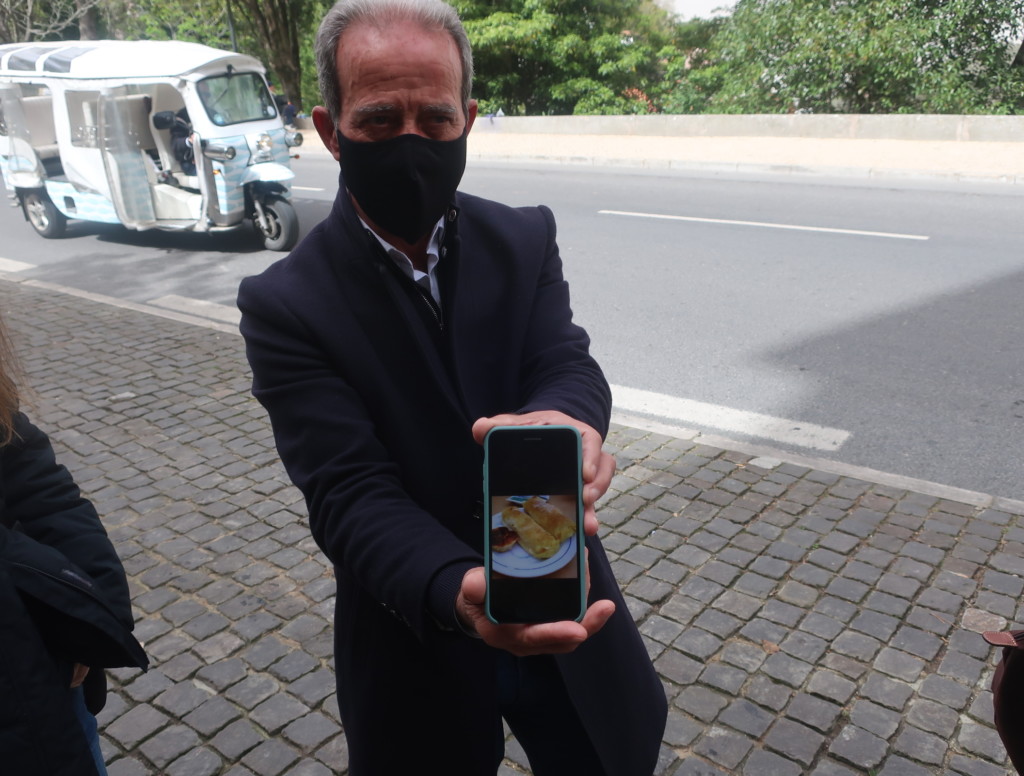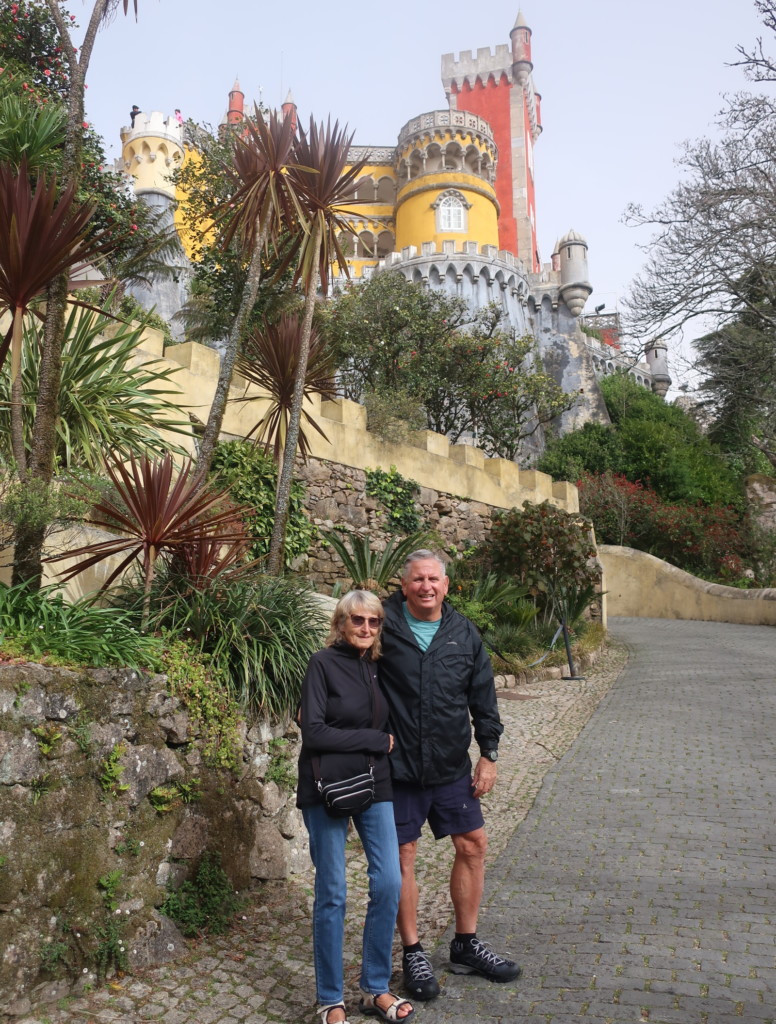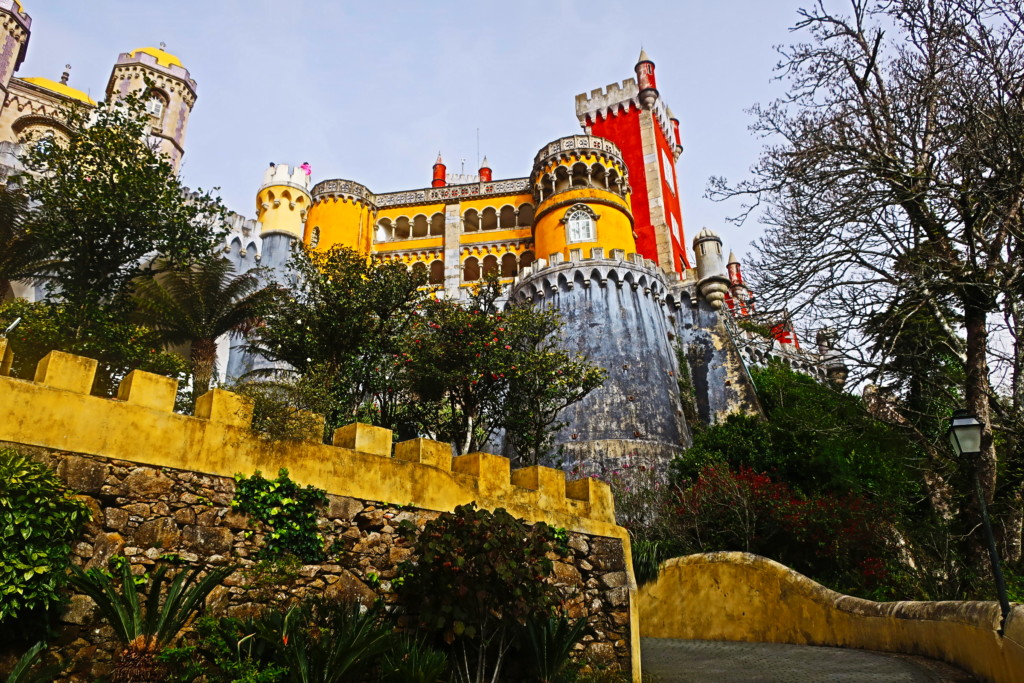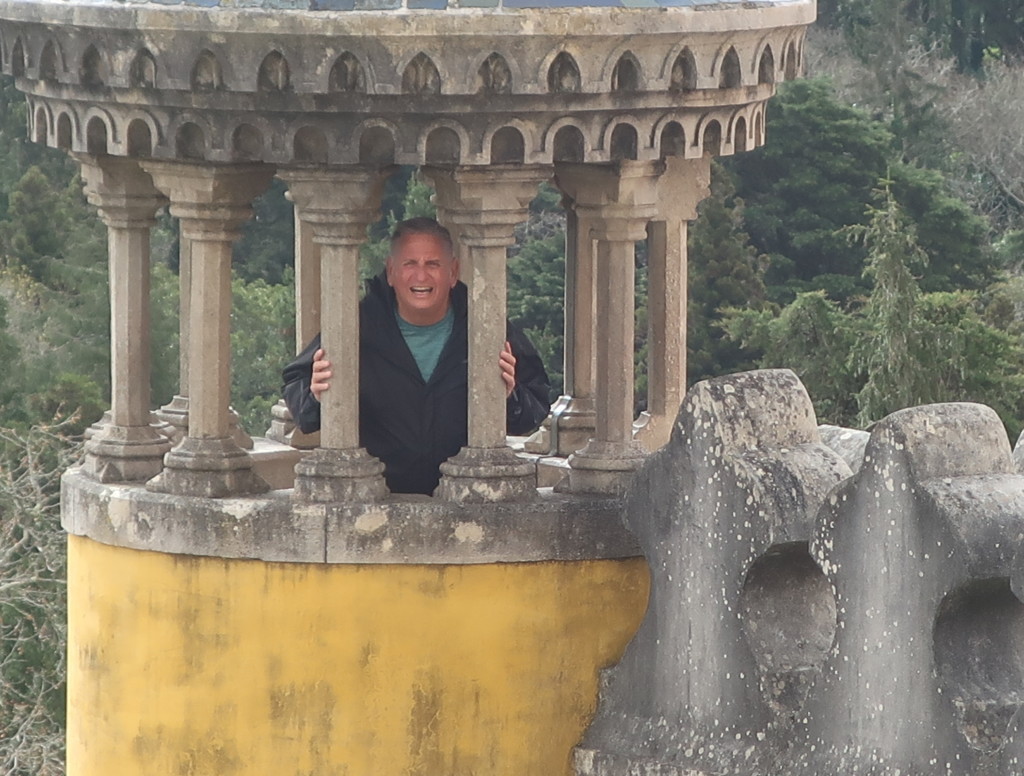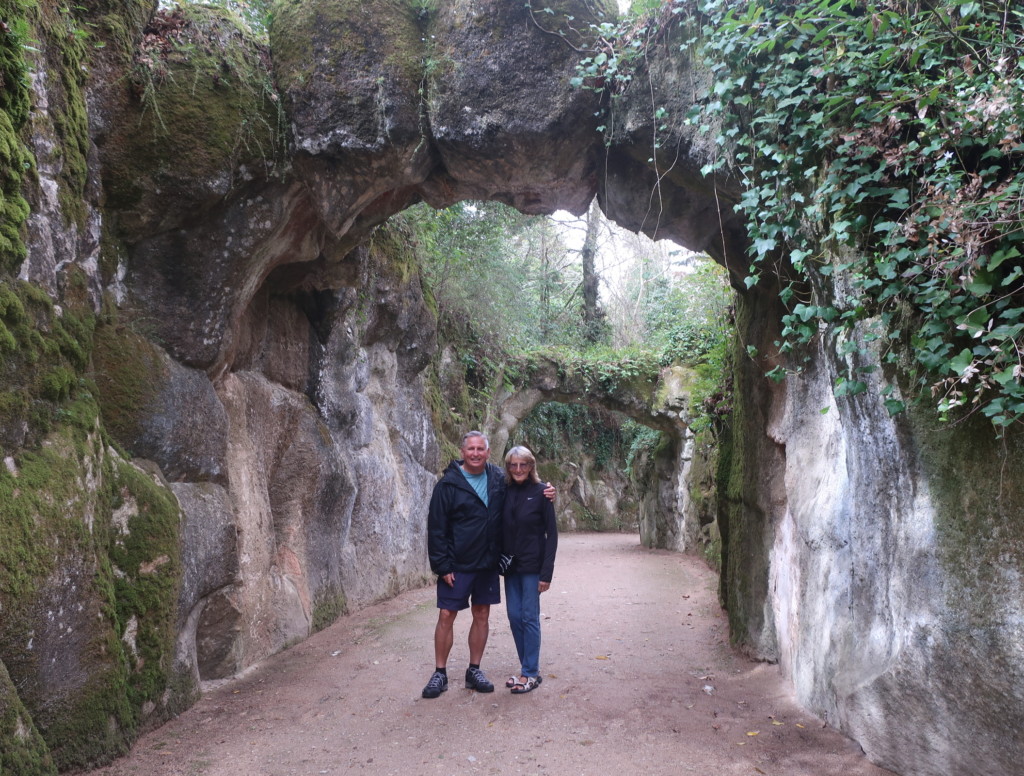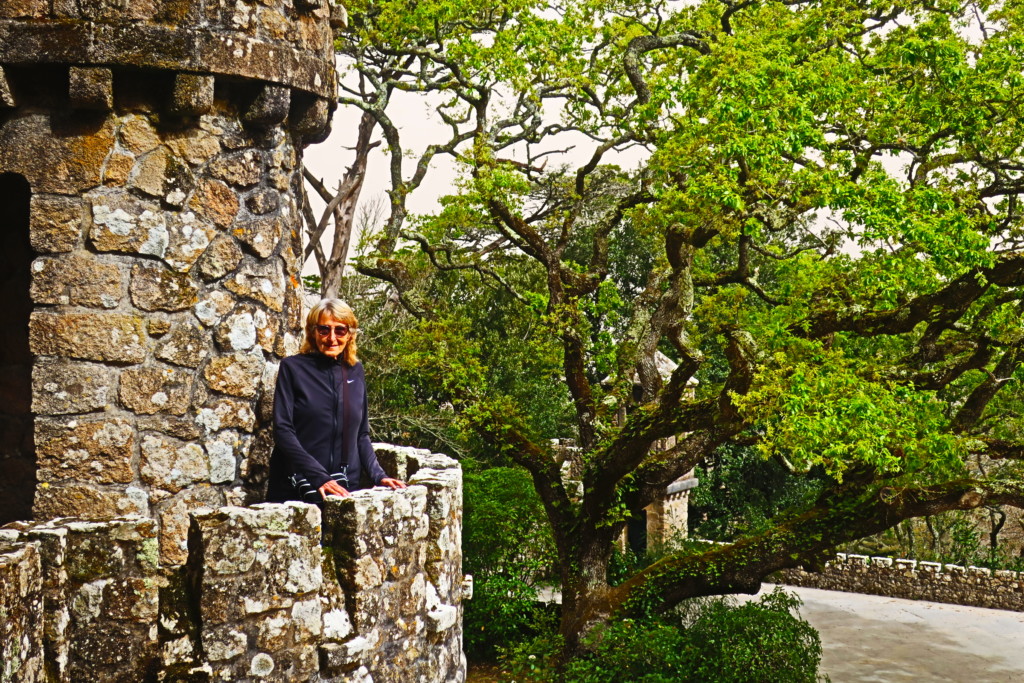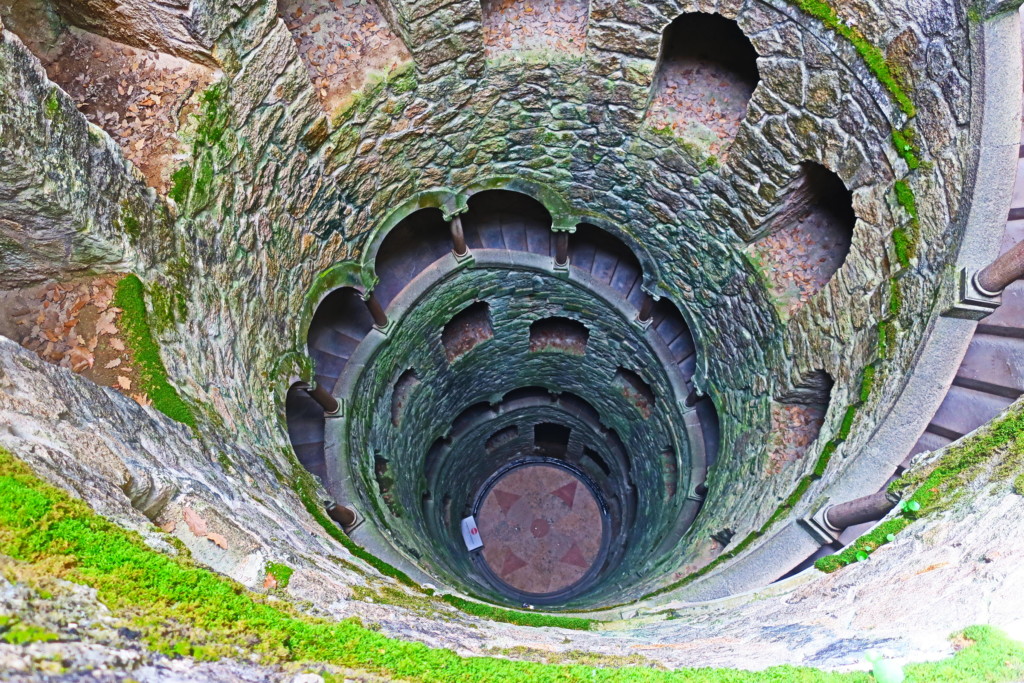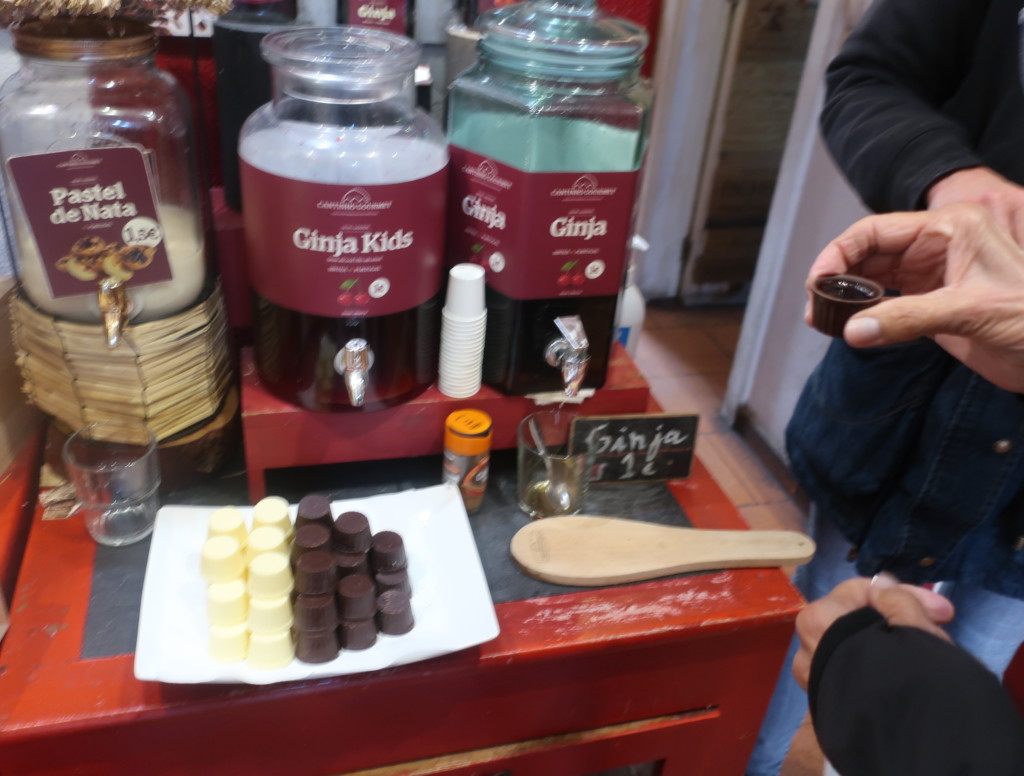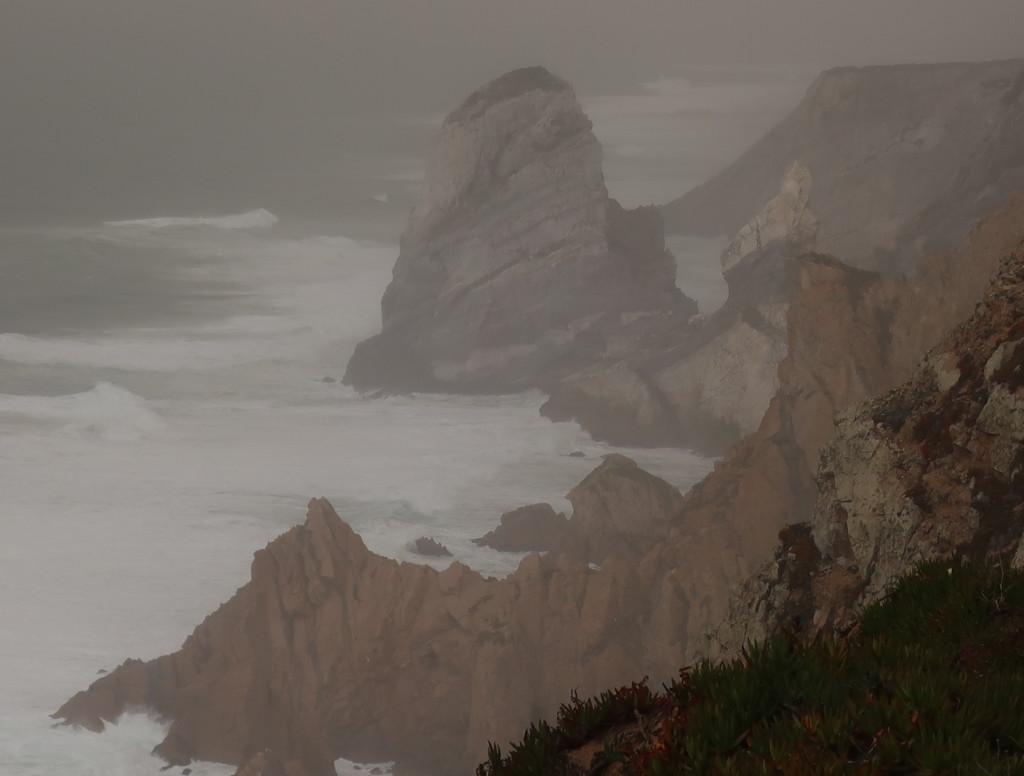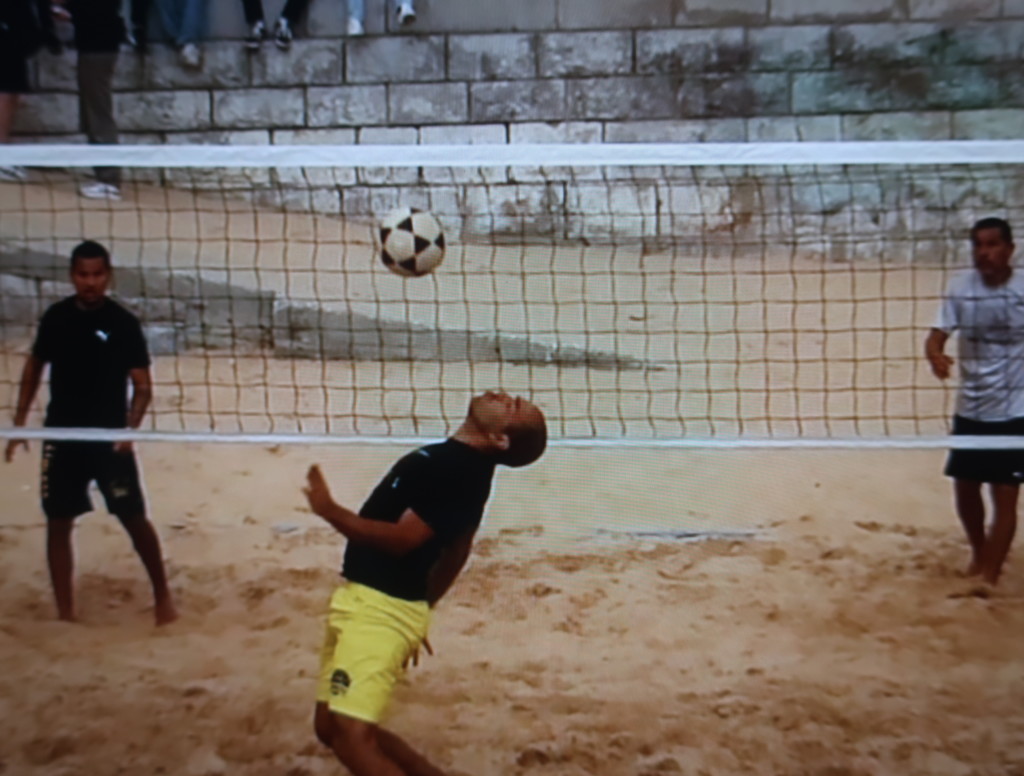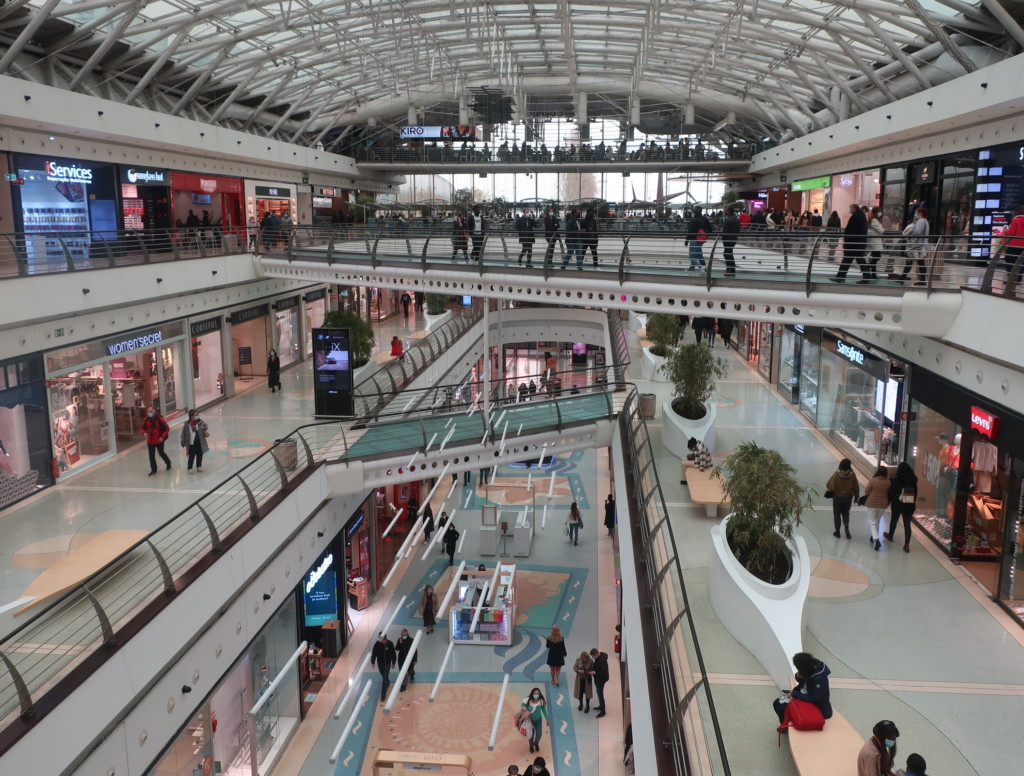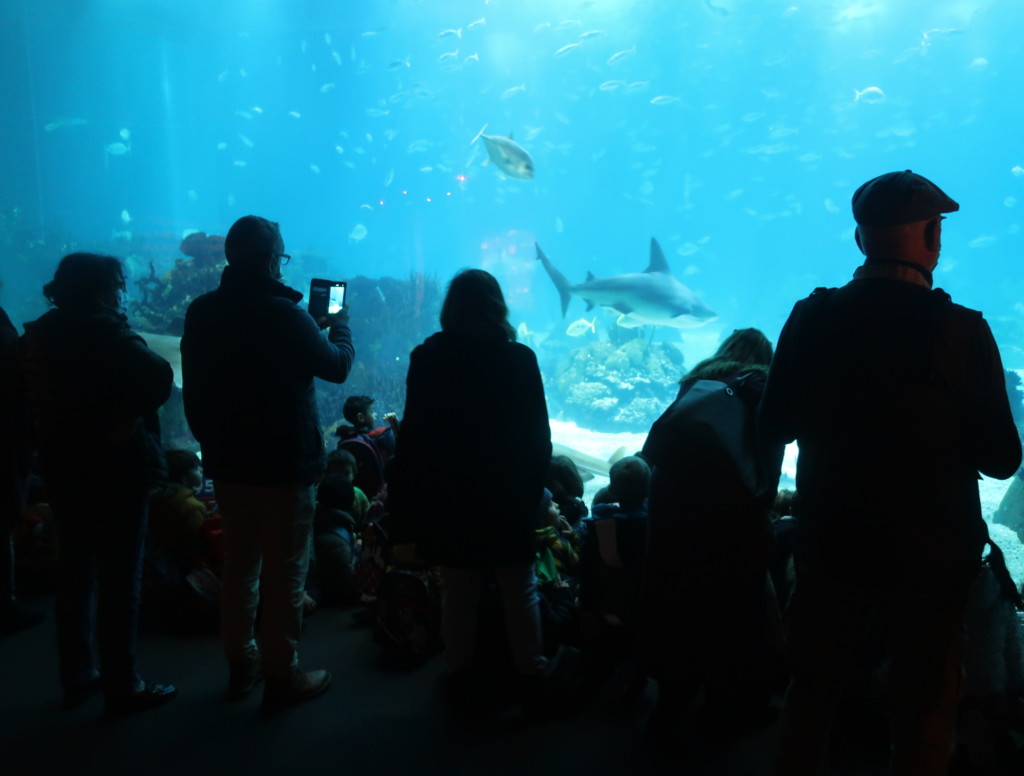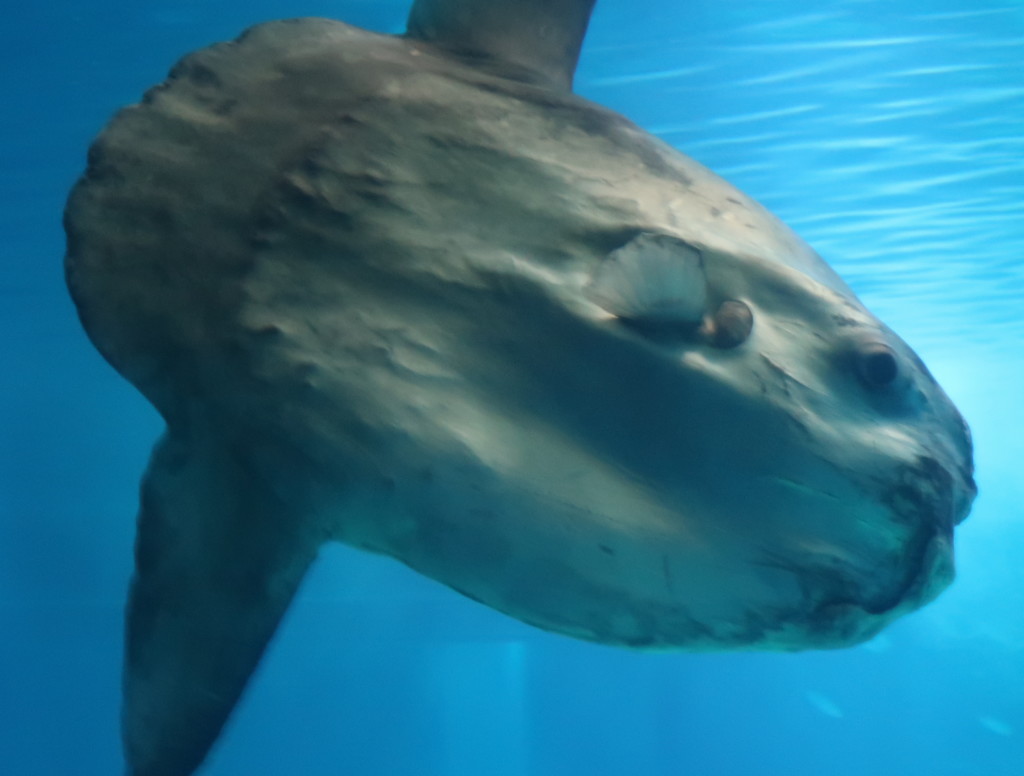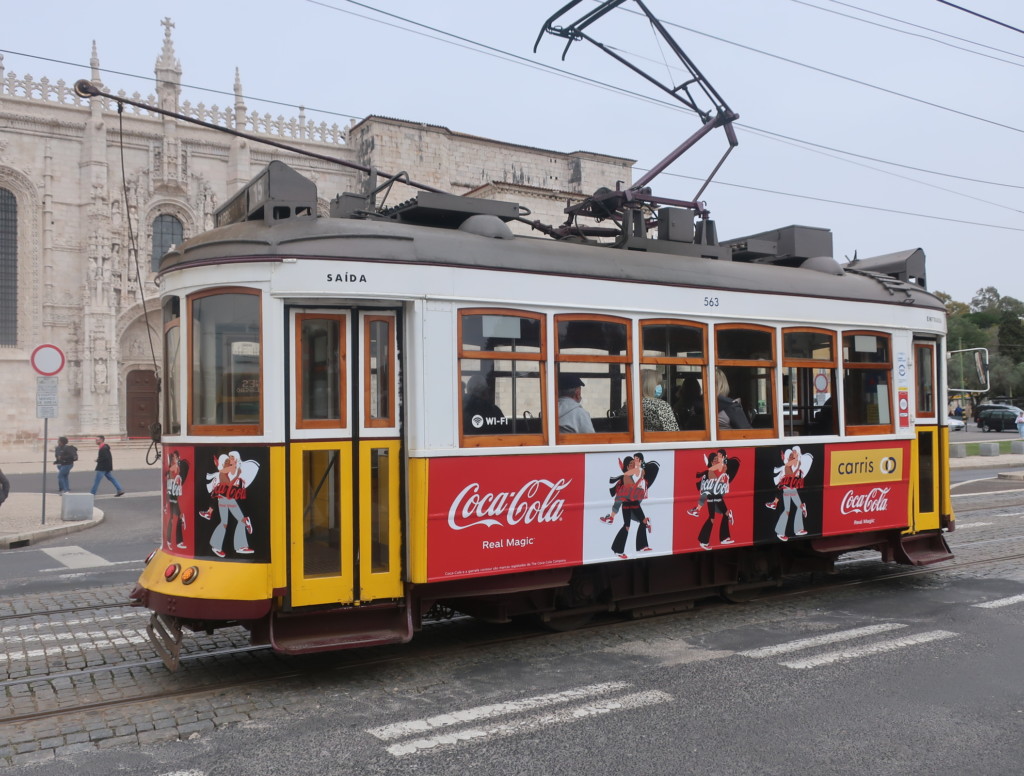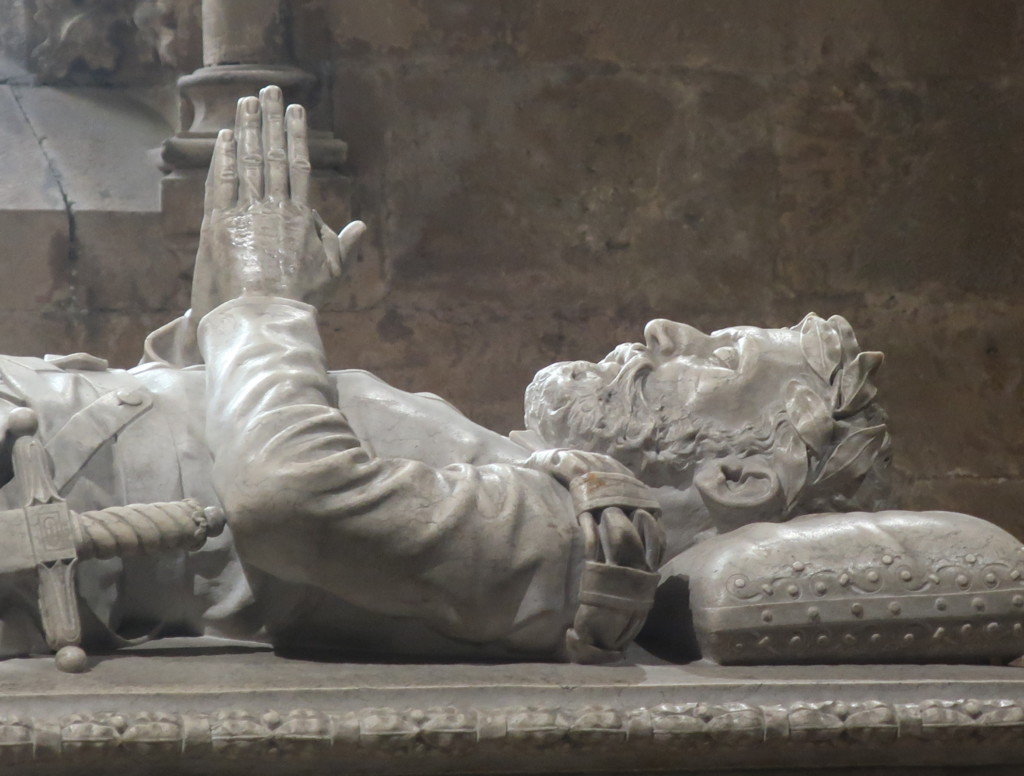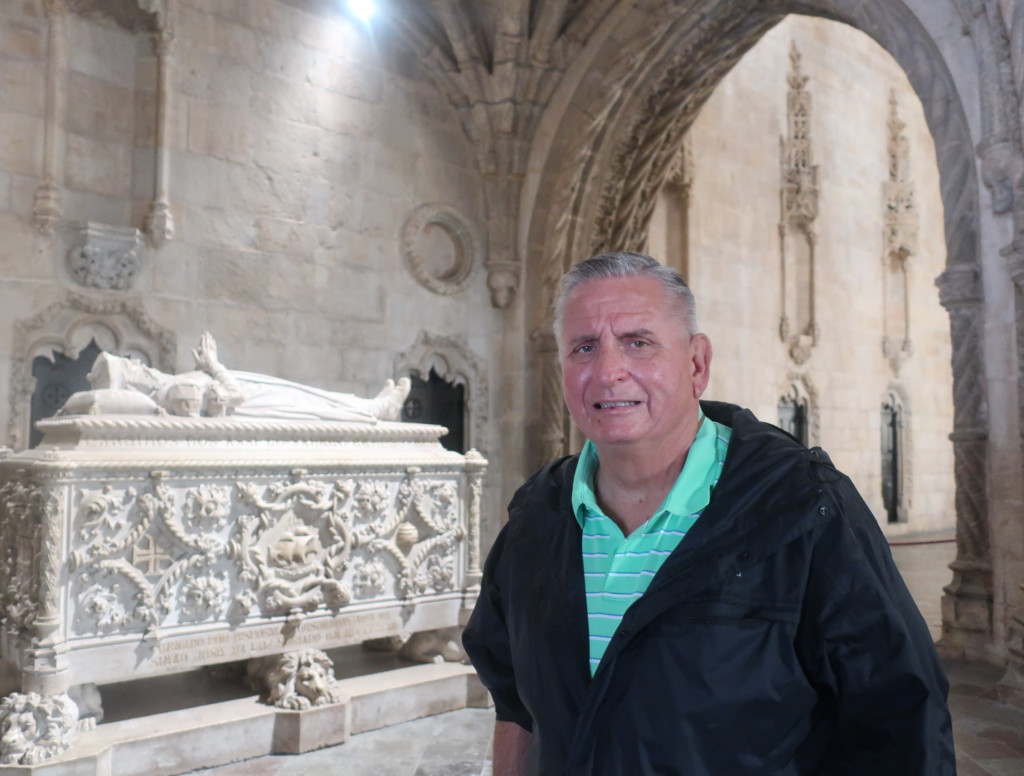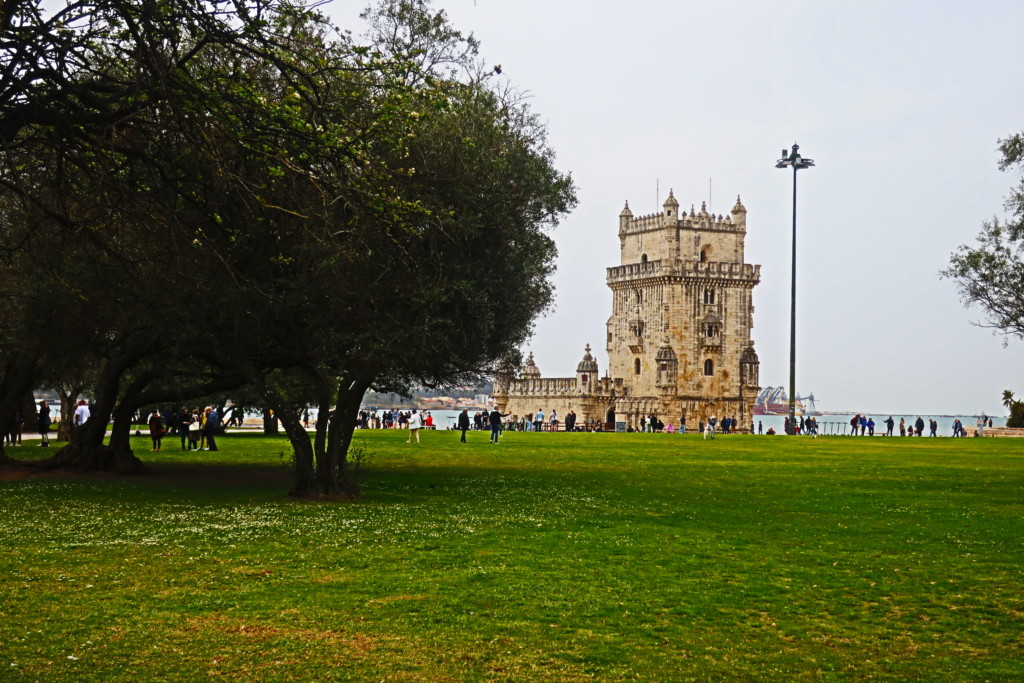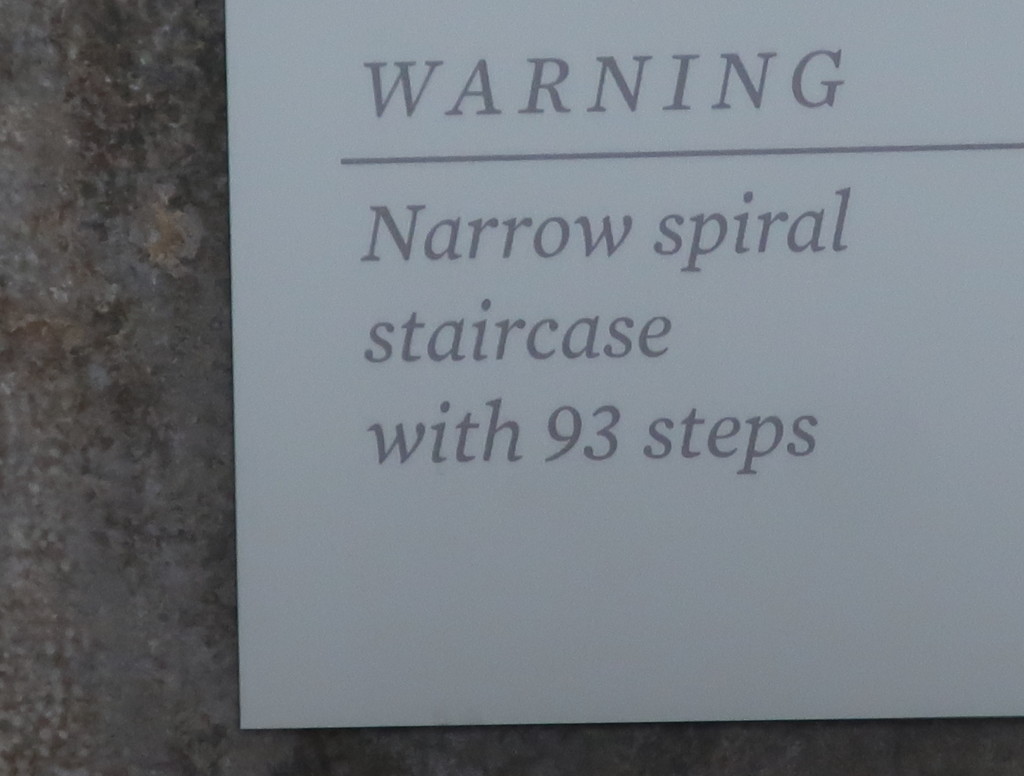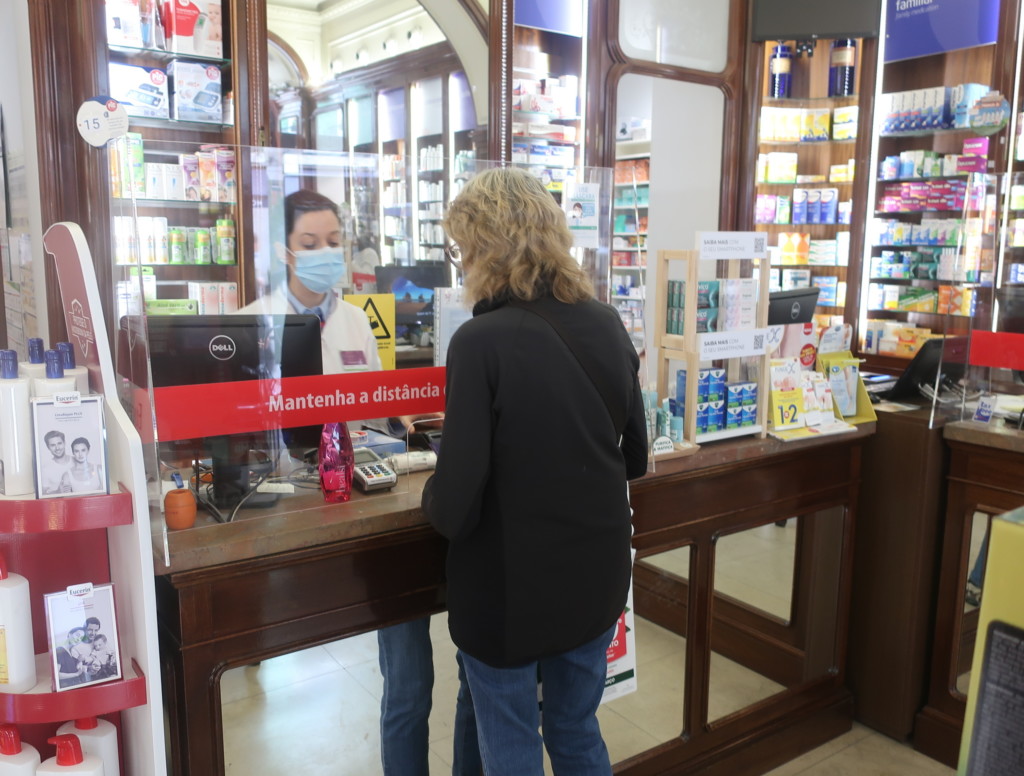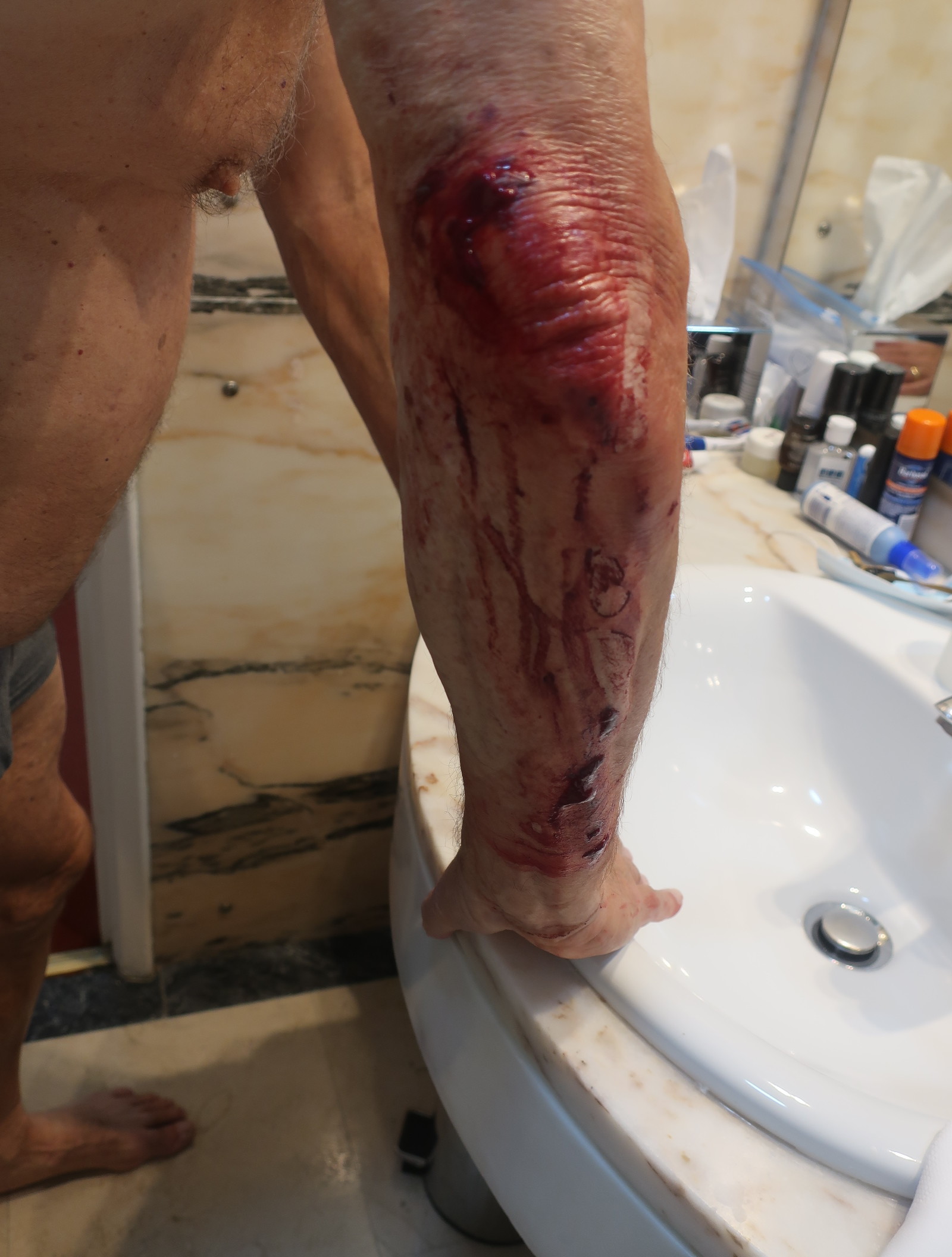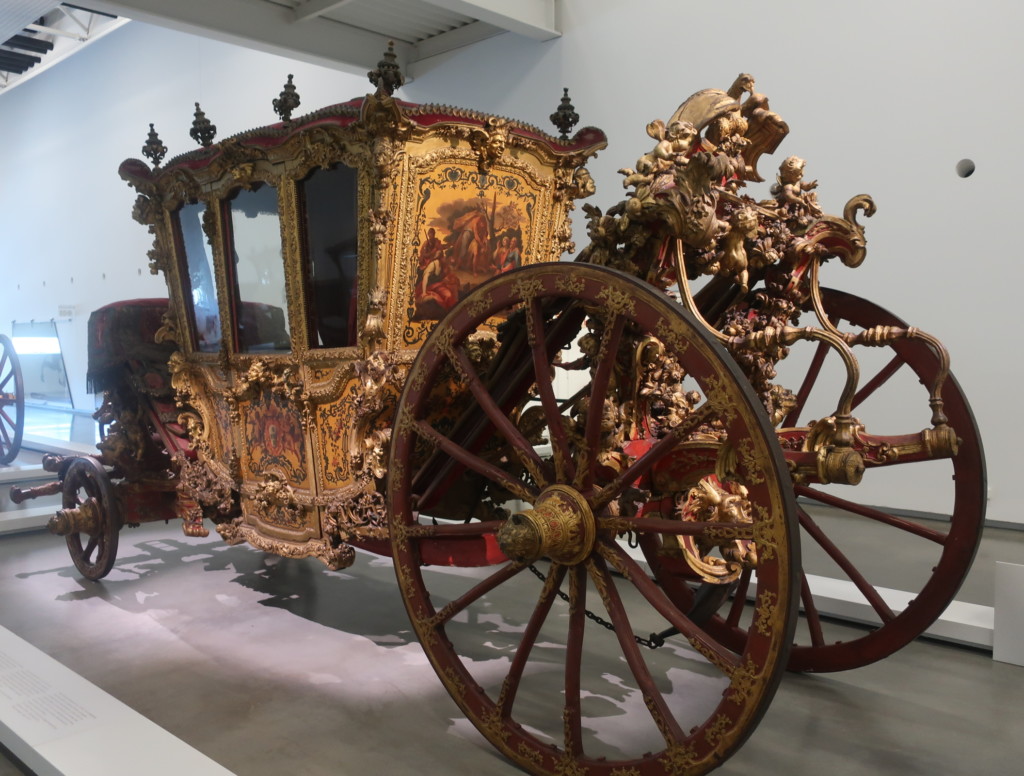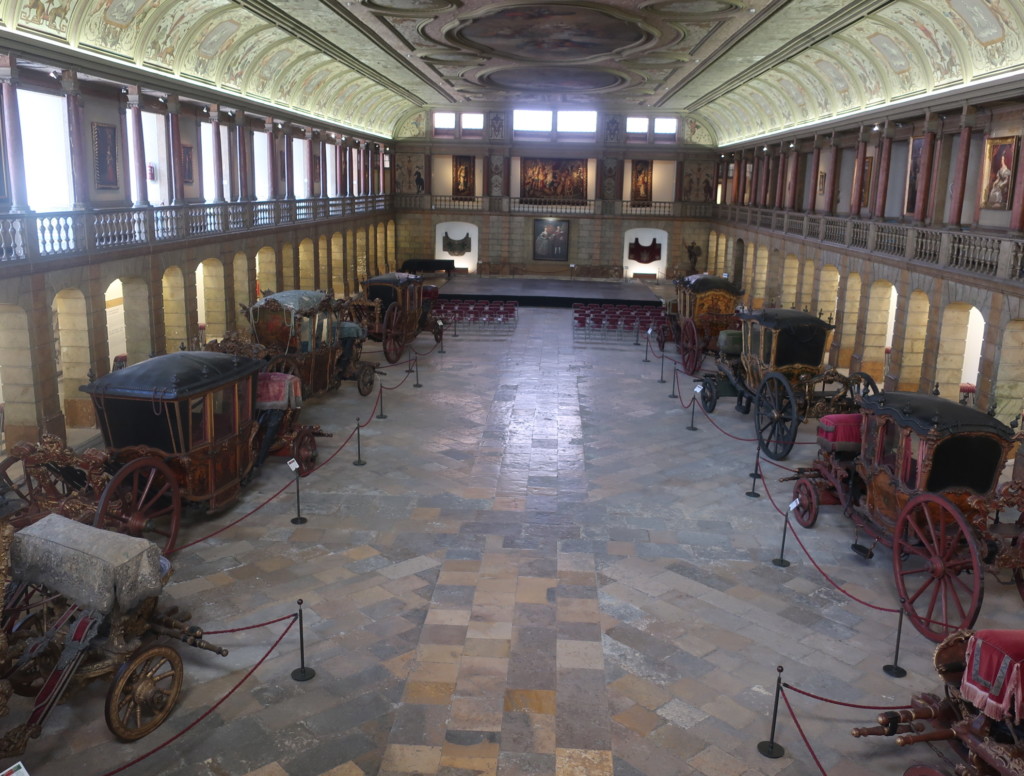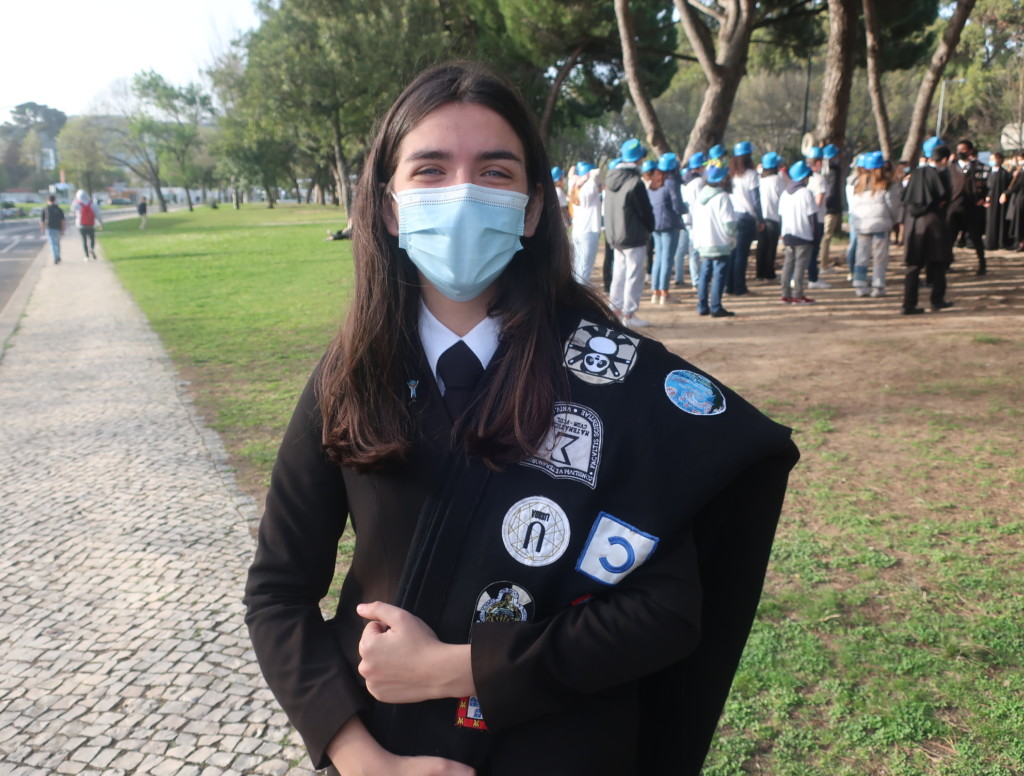Lisbon for the Portuguese is called “Lisboa.” One can find these name differences throughout Europe. For example, the German word for Vienna is “Wien.” The Italian word for Florence is “Frienze.” We spent 7 days in “Lisboa.” The following is an account of our sojourn to this magical city.
Our Jet Blue flight to New York was delayed by 4 hours due to poor weather. Eventually our Virgin Atlantic flight got us to Heathrow. It is only a 2 hour flight to Lisbon from London. After 36 hours or so, we finally made it.
We quickly learned and used Lisbon’s fast, clean and economical metro system. For just over a dollar, one can ride anywhere for an hour.
Traveling in March presented a number of opportunities like lower hotel rates. We were able to book a 5 Star hotel for about $200. Hotel Avenida Palace was built in 1892. It still has that old world ambiance.
Our room was not overly large. It did have a ceiling nearly 20 feet high. The chandelier is something we will never forget.
The breakfast was definitely 5 stars. We especially enjoyed the sauteed vegetables. There was also a “Detox Juice” we liked. It was green and mixed with a number of healthy vegetables.
Service was impeccable as all the men were dressed in white suites and a black bow tie. We always arrived at the beginning hour of 7:00 AM and claimed our seats overlooking Restauradores Square.
One item we found in most of the Portuguese hotels and resaurants is a pastry known as Pastel de Nata. These were sweet vanilla cream tarts. “De Nata’s” are actually knock-offs from the original found in a Lisbon neighborhood called “Pasteis de Belem.”
Monks developed the tart recipe ages ago. This secret recipe has been in the hands of this one family since 1837. Actually, visiting the Pasteis de Belem restaurant is an experience. There is usually a long line waiting to purchase these Pasteis. Or, do what we did and go into their restaurant and enjoy the Pasteis sitting down. At the time of this writing, one Pasties de Belem cost 1.20 Euro (just over a dollar). We purchased three with a small pint of water. I prefer the original version!
On our first day, we took a three-hour free walking tour. Jose explained that Portugal has 5,000 years of history. The Romans had a large impact. So were the Moors around 700AD. The Moors are credited in bringing tile artwork which still can be seen. The Arabs were finally defeated by the Portuguese in the 13thcentury.
Jose our guide, an ex-teacher, brought us to the ruins of an old church known as the “Convent.” Lisbon was hit with a major earthquake in 1755. It is said that 70,000 people died in Lisbon alone. People died in this church as they were celebrating All Saints Day. The church was left for a memorial, a time never to be forgotten.
I could not help from noticing the man sitting by the church entrance playing a harmonica. Every once in a while, you come across musicians playing for tips.
We traveled through the hilly neighborhood streets. Most of Lisbon, if not all, is covered with these 4×4 marble squares. If it is rainy, as it was on our walk, there is a good chance someone will fall—and a young woman did. We were talking to a local and the man said, “people fall all the time—even locals!”
Lisbon’s famous square, Praca do Comercio, is a major center for Lisbon. The Tagus River is quite close. There was a huge Palace at this place, destroyed by a 20-foot Tsunami in 1755. A large statue of Jose 1st is in the center. After the earthquake King Jose lived outside the city, never to return.
Not far is the “Arco da Rua Augusta,” which reminds us of the Arch de Triumphe in Paris.
A few weeks later we would enjoy a lunch along the perimeter at a place called “Can Can.” Inside the restaurant, there were hundreds of cans on shelves—hence the name.
The tour eventually took us to the neighborhood called Alfama. Narrow alley-ways predominate the area. These people definitely live in close quarters. It was designed to thwart any invading army. Quite normal to see laundry airing out. It would be quite easy to get lost in this area.
We would later come back to this area to a small Tapa Café. We enjoyed the Portuguese sausage of Chorizo, and the Spanish peppers known as Padron. Quite tasty.
Ironically, we had no taste for other Portuguese culinary delights such as Cod and barnacles.
Our tour ended close to the Saint George’s Castle. We decided to explore this castle after the tour. The castle has become a major site in Lisbon.
This hilly site has been inhabited since the 8th century BC. The Phoenicians were here, so were the Romans. The Portuguese finally took it over from the Moors in a siege that dates back to 1147AD. It has been a palace and a fort for the military.
On a nice day, this fort is a must place to visit. You may even run into a pride of Peacocks. We were surprised to see one actually in a tree. These birds can fly, at least a short way.
On another day, we took a tour to the village of Sintra, about 20 miles northwest of Lisbon. This was a mountain retreat where kings and queens would come to escape the summer heat. Our guide was a handsome looking man named, “George.” He was not the most knowledgeable guide we ever had, but George made up for it with his effervescent personality.
One of the highlights was visiting the Pena Palace located in the Sintra mountains. From a ruined monastery from the earthquake of 1755, Prince Ferdinand (who was actually German), purchased the lands and made it into a stunning Romantic Palace for his family. There is an eclectic use of at least 5 different architectural styles from Neo-Gothic to Neo-Renaissance.
Today, this palace is part of the UNESCO World Heritage Site and is one of the “7 Wonders of Portugal.”
We most vividly remember the “Trident” that greeted us on top of an archway. It is something out of a Harry Potter movie.
The palace is painted in red’s, yellow’s and even grey. There were a number of towers to enjoy.
There is one area where you can actually walk along the castle walls. The views are majestic
We took a 45-minute stop to see the Gardens of Regaleira.
Not as old as the other areas of Sintra, nevertheless it was indeed a unique experience to be visiting the Gardens of Regaleira.
I did make it down the 88 foot deep well.
For lunch, we went into the quaint village of Sintra. It was there that we tried “Ginja,” a Portuguese cherry liqueur made from sour Morello cherries. The tradition is to have a small portion in a chocolate cup. After drinking the Ginja, you eat the chocolate cup! In some places, you can actually eat the cherry too.
Our tour took us out to the western most part of Europe, Cabo da Roca. Unfortunately, the weather wasn’t cooperative. Nevertheless, we were there!
Our last stop on the tour was the port town of Cascais. The town was flying a large flag of Ukraine. The picture is dark due to the Sahara dust that hit us for a few days.
We also noticed a game of beach volleyball. It was unlike any volleyball we had ever witnessed as the participants could only touch the ball with their head, chest, feet and the side of the arm.
The following day we took a bus from our hotel to an area known as “Oriente.” It was here we visited a three-storied mall—Vasco Da Gama. It was indeed modern.
Our goal was visiting Europe’s largest aquarium— “Oceanario de Lisboa.” There is over a million-gallon tank holding hundreds of various species—like sharks.
My favorite fish was inside this tank, The Sun Fish—also known as Mola mola. It lives in the waters off of Portugal. Its fins are actually structured vertically—unlike any other fish in the world. It can grow up to 13 feet and is friendly to man.
Lisbon’s famous monastery, Jeronimos, can easily be traveled to by a tram 15. Like San Francisco, Lisbon is famous for its cable cars around the city.
It does cost about $10 dollars to enter this monastery, but is well worth the price. As part of the UNESCO World Heritage Site list, this huge structure dates back to the 15th century. Outside and inside is decorated in a “Manueline” architectural style—basically an ornate artistic style with arches and elaborate twisty carvings.
Visiting the Jeronimos church is actually free. Inside are the tombs of Portugal’s famous 16th century poet, Luis de Camoes, who wrote the lines, “Where land ends and the sea begins.”
Camoes wrote an epic poem about Portugal’s famous explorer, Vasco da Gama. Vasco’s tomb is close by too.
Walking straight out to the Tagus River is the Monument of the Discoveries. This cement monument origin was in 1960 in celebration of Portugal’s 500 years of discoveries. There are 33 figures carved on both sides. Leading the bunch is the famous Henry the Navigator. He promoted literally Portugal’s discoveries down and around Africa with the use of the Caravel ships and astrolabes. He taught such famous discoverers such as Vasco da Gama and Christopher Columbus.
The Monument of the Discoveries is 170 feet high. We decided not to venture up this monument and leave it for another time. Instead, I would venture up Belem’s Tower, just about a half a mile away.
Less than a hundred feet high, Belem Tower dates back to 1519. It is placed in a strategic point in the Tagus River so that sailors could see it last and first when arriving or leaving Lisbon. In essence, it is a ceremonial mini-fort. It is literally a four-floor tower.
There are 93 steps going up Belem Tower.
The stairway is extremely narrow. The steps are even narrower. Remember, this was built in 1519 when people were smaller, feet included. There are no side-rails to hold on either.
The standard practice is for about 20 people to go up at a time. About 20 people to come down.
For some reason, as I was coming down, there was a man and his baby coming up. I had to slip around him on the narrowest of steps. Sure enough, I fell. I attribute my surviving this fall from having played American football for 8 years, pressing weights for over 50 years and just luck.
It was St. Patty’s Day. I was extremely lucky as I did not have a concussion. I also had no broken bones. My phone was in my front pocket. Surely, it would have cracked in my back pocket as I slipped down several steps. I did, though, have a bloody arm. My jacket would hide and contain the blood trail. Outside the Tower, Kathie (who refused to climb those steps—smart woman) took me to a building next door with a bathroom. I remember paying the woman one Euro to enter. Paying for bathrooms is a common European practice—someone has to clean it. Later, we went to a Pharmacy where Kathie was able to find bandages and gauze for my wounds.
My severely sprained quad muscle did not stop us in our next day venture, The National Coach Museum. Queen Amelia, the last Queen of Portugal, saw that vehicles were replacing horse drawn coaches at the beginning of the 20th century. She collected coaches in Europe made from the beginning of the 17th century. In two separate buildings, there is an extensive collection of the best coaches ever made.
You may be lucky to see the carriage of King Carlos 1st who was assassinated in the carriage in 1908 with his eldest son. A bullet hole can still be seen.
We personally enjoyed what was the Equestrian Center, now filled with about 10 coaches. There is a unique upstairs where the Royalty would watch skillful equestrians ride their horses. It is something you don’t see every day. Ironically, with our March visit, there was but one other couple in this museum.
Our journeys through Lisbon even took us to “Pink Street.” It was once a notorious brothel, now a nighttime lively area of bars. This was our first and only “Pink Street.”
Walking around the University I came across this student, Maria, who did not want me to take a video of her group. She said, “You can take a picture of me!”
Seven days is not enough to see all of Lisbon. We made a sizable dent though. Our trip would continue with travels down to the southern coast of Portugal known as the Algarve. Then we continued north to a medieval city called, Evora. Finally, our travels will take us to Nazare, the place where eighty-foot waves do exist. Without a doubt, we were already impressed with Portugal’s friendly attitudes, culture and serine beauty architecturally and geographically.
Thank you for joining us on our journey through this magical country.
The title of the blog is referred to the practice of abbreviating Lisbon as “LX,” i.e. “Lexboa.”




